- Link to facebook
- Link to linkedin
- Link to twitter
- Link to youtube
- Writing Tips

How to Outline Expenses/Budget in Your Dissertation Plan

4-minute read
- 9th May 2023
When drafting your dissertation outline plan , there’s a lot to consider. One crucial section not to overlook is your budget and expenses. A comprehensive budget shows that you have thought through your study thoroughly and are prepared to execute your research plan successfully. Here, we’ll go through the steps you’ll need to take to craft a budget, including a few examples of common budget structures.
Steps to Take to Create Your Budget
1. consult your adviser, committee members, and funding sources for guidelines.
The source or sources responsible for funding your dissertation research will likely have guidelines on what is and isn’t a billable expense. Before defining your projected costs, check your funding organization’s specifications on allowable expenses. It can also help to speak with your adviser and potentially other dissertation committee members about the specifics and general guidelines to ensure everyone’s on the same page when it comes to your anticipated costs.
2. List All of the Costs Associated With Implementing Your Desired Dissertation Plan
Depending on your type of research, setting, and particular project, a wide range of items might be appropriate to add to your budget. Go through your dissertation project plan from beginning to end and list all of the required tasks, along with who will complete them, to ensure you don’t miss any expenses. Although the list below is not comprehensive, and your items might vary depending on your research project, some standard costs to consider are:
● Salaries and wages for all personnel involved in the project (including time and other resources that will be expected from your adviser and committee members).
● Equipment and lab fees.
● Recruitment costs for study participants.
● Participant compensation.
● Software costs for data collection, storage, and analysis.
● Office supplies (including any printing of recruitment materials, study information pamphlets, or conference posters).
● Travel (including transport to and from field sites, conference registration fees, transportation, lodging, and meals).
● Journal or conference submission and publication fees for papers created from your dissertation research.
Find this useful?
Subscribe to our newsletter and get writing tips from our editors straight to your inbox.
● Costs involved with writing, editing, and proofreading services for your dissertation .
Additionally, while it’s advisable to work within the constructs of your funding sources, don’t sell your research study short. After writing down all of the essential costs needed to complete your research plan, ask yourself how you would use any further financial backing. Could you make a good argument as to why supplementary funding would add significant value to your work? If so, consider adding these line items to your budget as well. If you have to negotiate your budget, you can always circle back and reconsider these extra items.
3. Construct Your Budget
The institution overseeing your dissertation project might require your budget to be submitted in a specified structure or template. However, if this isn’t the case, there are several possible approaches to organizing and presenting it – just make sure to check with your institution for any specific guidelines or requirements.
A standard request is to list your expenses by grouping them into direct costs , such as equipment, travel, and wages for people working on the project, and indirect costs , which are expenses that aren’t solely associated with your research project, such as general administration, utilities, and the use of shared services or spaces like libraries. It’s also common to arrange your direct and indirect costs into a Line-Item Budget (LIB) , which simply means that you list each of your projected expenses as a line in your budget.
There are many types of budget templates available for free online. Some designs will include a column to provide more details about each item, while other approaches will list the justifications for the expenses at the end. If you have multiple funding sources, it may be helpful to have columns for each funder and the percentage or amount of each expense they will be expected to be responsible for. Some templates will calculate the total costs for you , but no matter which presentation method you choose, make sure your costs are entered and totaled correctly.
Although the individual items will vary from project to project, these three steps will lead you on your way to preparing a persuasive proposal budget:
● Consult your adviser, committee members, and funding sources for guidelines.
● List all the costs associated with implementing your desired dissertation plan (including the items you hope to get funded if they are justifiable).
● Construct your budget with direct and indirect costs with justifications for each using an appropriate template and confirm your expenses are calculated correctly.
We wish you the best of luck with your budget writing and dissertation proposal. For more help, check out our comprehensive Dissertation Writing Guide . And if you’re interested in using our services here at Proofed, you can try them for free .
Share this article:
Post A New Comment
Got content that needs a quick turnaround? Let us polish your work. Explore our editorial business services.
5-minute read
Free Email Newsletter Template
Promoting a brand means sharing valuable insights to connect more deeply with your audience, and...
6-minute read
How to Write a Nonprofit Grant Proposal
If you’re seeking funding to support your charitable endeavors as a nonprofit organization, you’ll need...
9-minute read
How to Use Infographics to Boost Your Presentation
Is your content getting noticed? Capturing and maintaining an audience’s attention is a challenge when...
8-minute read
Why Interactive PDFs Are Better for Engagement
Are you looking to enhance engagement and captivate your audience through your professional documents? Interactive...
7-minute read
Seven Key Strategies for Voice Search Optimization
Voice search optimization is rapidly shaping the digital landscape, requiring content professionals to adapt their...
Five Creative Ways to Showcase Your Digital Portfolio
Are you a creative freelancer looking to make a lasting impression on potential clients or...

Make sure your writing is the best it can be with our expert English proofreading and editing.
The Research Whisperer
Just like the thesis whisperer – but with more money, how to make a simple research budget.

Every research project needs a budget*.
If you are applying for funding, you must say what you are planning to spend that funding on. More than that, you need to show how spending that money will help you to answer your research question .
So, developing the budget is the perfect time to plan your project clearly . A good budget shows the assessors that you have thought about your research in detail and, if it is done well, it can serve as a great, convincing overview of the project.
Here are five steps to create a simple budget for your research project.
1. List your activities
Make a list of everything that you plan to do in the project, and who is going to do it.
Take your methodology and turn it into a step-by-step plan. Have you said that you will interview 50 people? Write it on your list.
Are you performing statistical analysis on your sample? Write it down.
Think through the implications of what you are going to do. Do you need to use a Thingatron? Note down that you will need to buy it, install it, and commission it.
What about travel? Write down each trip separately. Be specific. You can’t just go to ‘South East Asia’ to do fieldwork. You need to go to Kuala Lumpur to interview X number of people over Y weeks, then the same again for Singapore and Jakarta.
Your budget list might look like this:
- I’m going to do 10 interviews in Kuala Lumpur; 10 interviews in Singapore; 10 interviews in Jakarta by me.
- I’ll need teaching release for three months for fieldwork.
- I’ll need Flights to KL, Singapore, Jakarta and back to Melbourne.
- I’ll need Accommodation for a month in each place, plus per diem.
- The transcription service will transcribe the 30 interviews.
- I’ll analysis the transcribed results. (No teaching release required – I’ll do it in my meagre research time allowance.)
- I’ll need a Thingatron X32C to do the trials.
- Thing Inc will need to install the Thingatron. (I wonder how long that will take.)
- The research assistant will do three trials a month with the Thingatron.
- I’ll need to hire a research assistant (1 day per week for a year at Level B1.)
- The research assistant will do the statistical analysis of the Thingatron results.
- I’ll do the writing up in my research allowance time.
By the end, you should feel like you have thought through the entire project in detail. You should be able to walk someone else through the project, so grab a critical friend and read the list to them. If they ask questions, write down the answers.
This will help you to get to the level of specificity you need for the next step.
2. Check the rules again
You’ve already read the funding rules, right? If not, go and read them now – I’ll wait right here until you get back.
Once you’ve listed everything you want to do, go back and read the specific rules for budgets again. What is and isn’t allowed? The funding scheme won’t pay for equipment – you’ll need to fund your Thingatron from somewhere else. Cross it off.
Some schemes won’t fund people. Others won’t fund travel. It is important to know what you need for your project. It is just as important to know what you can include in the application that you are writing right now.
Most funding schemes won’t fund infrastructure (like building costs) and other things that aren’t directly related to the project. Some will, though. If they do, you should include overheads (i.e. the general costs that your organisation needs to keep running). This includes the cost of basics like power and lighting; desks and chairs; and cleaners and security staff. It also includes service areas like the university library. Ask your finance officer for help with this. Often, it is a percentage of the overall cost of the project.
If you are hiring people, don’t forget to use the right salary rate and include salary on-costs. These are the extra costs that an organisation has to pay for an employee, but that doesn’t appear in their pay check. This might include things like superannuation, leave loading, insurance, and payroll tax. Once again, your finance officer can help with this.
Your budget list might now look like this:
- 10 interviews in Kuala Lumpur; 10 interviews in Singapore; 10 interviews in Jakarta by me.
- Teaching release for three months for fieldwork.
- Flights to KL, Singapore, Jakarta and back to Melbourne.
- Accommodation for a month in each place, plus per diem, plus travel insurance (rule 3F).
- Transcription of 30 interviews, by the transcription service.
- Analysis of transcribed results, by me. No teaching release required.
- Purchase and install Thingatron X32C, by Thing Inc . Not allowed by rule 3C . Organise access to Thingatron via partner organistion – this is an in-kind contribution to the project.
- Three trials a month with Thingatron, by research assistant.
- Statistical analysis of Thingatron results, by research assistant.
- Research assistant: 1 day per week for a year at Level B1, plus 25.91% salary on-costs.
- Overheads at 125% of total cash request, as per rule 3H.
3. Cost each item
For each item on your list, find a reasonable cost for it . Are you going to interview the fifty people and do the statistical analysis yourself? If so, do you need time release from teaching? How much time? What is your salary for that period of time, or how much will it cost to hire a replacement? Don’t forget any hidden costs, like salary on-costs.
If you aren’t going to do the work yourself, work out how long you need a research assistant for. Be realistic. Work out what level you want to employ them at, and find out how much that costs.
How much is your Thingatron going to cost? Sometimes, you can just look that stuff up on the web. Other times, you’ll need to ring a supplier, particularly if there are delivery and installation costs.
Jump on a travel website and find reasonable costs for travel to Kuala Lumpur and the other places. Find accommodation costs for the period that you are planning to stay, and work out living expenses. Your university, or your government, may have per diem rates for travel like this.
Make a note of where you got each of your estimates from. This will be handy later, when you write the budget justification.
- 10 interviews in Kuala Lumpur; 10 interviews in Singapore; 10 interviews in Jakarta by me (see below for travel costs).
- Teaching release for three months for fieldwork = $25,342 – advice from finance officer.
- Flights to KL ($775), Singapore ($564), Jakarta ($726), Melbourne ($535) – Blue Sky airlines, return economy.
- Accommodation for a month in each place (KL: $3,500; Sing: $4,245; Jak: $2,750 – long stay, three star accommodation as per TripAdviser).
- Per diem for three months (60 days x $125 per day – University travel rules).
- Travel insurance (rule 3F): $145 – University travel insurance calculator .
- Transcription of 30 interviews, by the transcription service: 30 interviews x 60 minutes per interview x $2.75 per minute – Quote from transcription service, accented voices rate.
- Analysis of transcribed results, by me. No teaching release required. (In-kind contribution of university worth $2,112 for one week of my time – advice from finance officer ).
- Purchase and install Thingatron X32C, by Thing Inc . Not allowed by rule 3C. Organise access to Thingatron via partner organistion – this is an in-kind contribution to the project. ($2,435 in-kind – quote from partner organisation, at ‘favoured client’ rate.)
- Research assistant: 1 day per week for a year at Level B1, plus 25.91% salary on-costs. $12,456 – advice from finance officer.
Things are getting messy, but the next step will tidy it up.
4. Put it in a spreadsheet
Some people work naturally in spreadsheets (like Excel). Others don’t. If you don’t like Excel, tough. You are going to be doing research budgets for the rest of your research life.
When you are working with budgets, a spreadsheet is the right tool for the job, so learn to use it! Learn enough to construct a simple budget – adding things up and multiplying things together will get you through most of it. Go and do a course if you have to.
For a start, your spreadsheet will multiply things like 7 days in Kuala Lumpur at $89.52 per day, and it will also add up all of your sub-totals for you.
If your budget doesn’t add up properly (because, for example, you constructed it as a table in Word), two things will happen. First, you will look foolish. Secondly, and more importantly, people will lose confidence in all your other numbers, too. If your total is wrong, they will start to question the validity of the rest of your budget. You don’t want that.
If you are shy of maths, then Excel is your friend. It will do most of the heavy lifting for you.
For this exercise, the trick is to put each number on a new line. Here is how it might look.
| Budget items | Number of items | Cost per item | Total cash cost | In-kind cost | Notes |
|---|---|---|---|---|---|
| Melbourne – Kuala Lumpur economy airfare | 1 | $775.00 | $775.00 | Blue Sky Airlines | |
| 1 month accommodation | 1 | $3,500.00 | $3,500.00 | 1 month x long stay via TripAdvisor | |
| 30 days per diem | 30 | $125.00 | $3,750.00 | University travel rules | |
| Kuala Lumpur – Singapore economy airfare | 1 | $564.00 | $564.00 | Blue Sky Airlines | |
| 1 month accommodation | 1 | $4,245.00 | $4,245.00 | 1 month x long stay via TripAdvisor | |
| 30 days per diem | 30 | $125.00 | $3,750.00 | University travel rules | |
| Singapore – Jakarta economy airfare | 1 | $726.00 | $726.00 | Blue Sky Airlines | |
| 1 month accommodation | 1 | $2,750.00 | $2,750.00 | 1 month x long stay via TripAdvisor | |
| 30 days per diem | 30 | $125.00 | $3,750.00 | University travel rules | |
| Jakarta – Melbourne economy airfare | 1 | $535.00 | $535.00 | Blue Sky Airlines | |
| Travel insurance: 90 days, South East Asia | 90 | $1.61 | $145.00 | University travel rules | |
| Transcription: 30 interviews with foreign accents | 1800 | $2.75 | $4,950.00 | Quote from transcription service | |
| Access to Thingatron | $2,435.00 | Favoured client rate, Thing Inc. | |||
| Chief Investigator: 0.2 of Academic D.2 | $36,457.00 | Includes 25.91% salary on-costs | |||
| Teaching relief: 90 days of Academic D.2 | $25,342.00 | Includes 25.91% salary on-costs | |||
| Research Assistant: 0.1 of Academic B.1 | $12,456.00 | Includes 25.91% salary on-costs | |||
| Sub-total | |||||
| Overheads | $84,047.50 | University overheads at 125% | |||
| Total |
5. Justify it
Accompanying every budget is a budget justification. For each item in your budget, you need to answer two questions:
- Why do you need this money?
- Where did you get your figures from?
The budget justification links your budget to your project plan and back again. Everything item in your budget should be listed in your budget justification, so take the list from your budget and paste it into your budget justification.
For each item, give a short paragraph that says why you need it. Refer back to the project plan and expand on what is there. For example, if you have listed a research assistant in your application, this is a perfect opportunity to say what the research assistant will be doing.
Also, for each item, show where you got your figures from. For a research assistant, this might mean talking about the level of responsibility required, so people can understand why you chose the salary level. For a flight, it might be as easy as saying: “Blue Sky airlines economy return flight.”
Here is an example for just one aspect of the budget:
Fieldwork: Kuala Lumpur
Past experience has shown that one month allows enough time to refine and localise interview questions with research partners at University of Malaya, test interview instrument, recruit participants, conduct ten x one-hour interviews with field notes. In addition, the novel methodology will be presented at CONF2015, to be held in Malaysia in February 2015.
Melbourne – Kuala Lumpur economy airfare is based on current Blue Sky Airlines rates. Note that airfares have been kept to a minimum by travelling from country to country, rather than returning to Australia.
1 month accommodation is based on three star, long stay accommodation rates provided by TripAdvisor.
30 days per diem rate is based on standard university rates for South-East Asia.
Pro tip: Use the same nomenclature everywhere. If you list a Thingatron X32C in your budget, then call it a Thingatron X32C in your budget justification and project plan. In an ideal world, someone should be able to flip from the project plan, to the budget and to the budget justification and back again and always know exactly where they are.
- Project plan: “Doing fieldwork in Malaysia? Whereabouts?” Flips to budget.
- Budget: “A month in Kuala Lumpur – OK. Why a month?” Flips to budget justification.
- Budget justification: “Ah, the field work happens at the same time as the conference. Now I get it. So, what are they presenting at the conference?” Flips back to the project description…
So, there you have it: Make a list; check the rules; cost everything; spreadsheet it; and then justify it. Budget done. Good job, team!
This article builds on several previous articles. I have shamelessly stolen from them.
- Constructing your budget – Jonathan O’Donnell.
- What makes a winning budget ? – Jonathan O’Donnell.
- How NOT to pad your budget – Tseen Khoo.
- Conquer the budget, conquer the project – Tseen Khoo.
- Research on a shoestring – Emily Kothe.
- How to make a simple Gantt chart – Jonathan O’Donnell.
* Actually, there are some grant schemes that give you a fixed amount of money, which I think is a really great idea . However, you will still need to work out what you are going to spend the money on, so you will still need a budget at some stage, even if you don’t need it for the application.
Also in the ‘simple grant’ series:
- How to write a simple research methods section .
- How to make a simple Gantt chart .
Share this:
29 comments.
This has saved my day!
Happy to help, Malba.
Like Liked by 1 person
[…] you be putting in a bid for funding? Are there costs involved, such as travel or equipment costs? Research Whisperer’s post on research budgets may help you […]
I’ve posted a link to this article of Jonathan’s in the Australasian Research Management Society LinkedIn group as well, as I’m sure lots of other people will want to share this.
Thanks, Miriam.
This is great! Humorous way to talk explain a serious subject and could be helpful in designing budgets for outreach grants, as well. Thanks!
Thanks, Jackie
If you are interested, I have another one on how to do a timeline: https://theresearchwhisperer.wordpress.com/2011/09/13/gantt-chart/
[…] really useful information regarding budget development can be found on the Research Whisperer Blog here. Any other thoughts and suggestions are welcome – what are your tips to developing a good […]
[…] it gets you to the level of specificity that you need for a detailed methods section. Similarly, working out a budget for your workshops will force you to be specific about how many people will be attending (venue […]
A friend of mine recently commented by e-mail:
I was interested in your blog “How to make a simple research budget”, particularly the statement: “Think through the implications of what you are going to do. Do you need to use a Thingatron? Note down that you will need to buy it, install it, and commission it.”
From my limited experience so far, I’d think you could add:
“Who else is nearby who might share the costs of the Thingatron? If it’s a big capital outlay, and you’re only going to use it to 34% of it’s capacity, sharing can make the new purchase much easier to justify. But how will this fit into your grant? And then it’s got to be maintained – the little old chap who used to just do all that odd mix of electrickery and persuasion to every machine in the lab got retrenched in the last round. You can run it into the ground. But that means you won’t have a reliable, stable Thingatron all ready to run when you apply for the follow-on grant in two years.”
[…] (For more on this process, take a look at How to Write a Simple Project Budget.) […]
[…] Source: How to make a simple research budget […]
This is such a big help! Thank You!
No worries, Claudine. Happy to help.
Would you like to share the link of the article which was wrote about funding rules? I can’t find it. Many thanks!
Hello there – do you mean this post? https://theresearchwhisperer.wordpress.com/2012/02/14/reading-guidelines
Thank @tseen khoo, very useful tips. I also want to understand more about 3C 3F 3H. What do they stand for? Can you help me find out which posts talk about that. Thank again.
[…] mount up rapidly, even if you are in a remote and developing part of the world. Putting together a half decent budget early on and being aware of funding opportunities can help to avoid financial disaster half way […]
This is so amazing, it really helpful and educative. Happy unread this last week before my proposal was drafted.
Happy to help, Babayomi. Glad you liked it.
really useful! thanks kate
[…] “How to Make a Simple Research Budget,” by Jonathan O’Donnell on The Research Whisperer […]
[…] offering services that ran pretty expensive. until I found this one. It guided me through making a simple budget. The information feels sort of like a university graduate research paper but having analysed […]
[…] Advice on writing research proposals for industry […]
[…] research serves as the bedrock of informed budgeting. Explore the average costs of accommodation, transportation, meals, and activities in your chosen […]
[…] How to make a simple research budget […]
Leave a comment Cancel reply
This site uses Akismet to reduce spam. Learn how your comment data is processed .
- Already have a WordPress.com account? Log in now.
- Subscribe Subscribed
- Copy shortlink
- Report this content
- View post in Reader
- Manage subscriptions
- Collapse this bar
- Thesis Action Plan New
- Academic Project Planner
Literature Navigator
Thesis dialogue blueprint, writing wizard's template, research proposal compass.
- Why students love us
- Rebels Blog
- Why we are different
- All Products
- Coming Soon
Detailed Research Proposal Budget Example: Plan Your Finances

Planning the budget for your research proposal is a critical step that can determine the success of your project. A well-crafted budget not only outlines the financial needs of your research but also assures funders that you have a clear understanding of the costs involved. This article will guide you through the essential elements of creating a detailed research proposal budget, helping you to plan your finances effectively.
Key Takeaways
- A research proposal budget is a financial plan that details the costs of a research project.
- Including both direct and indirect costs in your budget is crucial for accuracy.
- Justifying each budget item helps in gaining approval from stakeholders.
- Avoiding common budgeting mistakes can improve the chances of funding success.
- Using tools and resources can simplify the budget planning process.
Understanding the Importance of a Research Proposal Budget
Defining a research proposal budget.
A research proposal budget is a detailed financial plan that outlines the costs associated with your project. It includes both direct and indirect costs, ensuring that every aspect of your research is financially covered. Creating a clear budget helps you avoid unexpected expenses and keeps your project on track.
Role in Project Planning
The budget plays a crucial role in project planning by providing a roadmap for how funds will be allocated. It helps you identify the resources needed and ensures that you have the financial means to achieve your research question . This planning phase is essential for crafting an effective Ph.D. thesis proposal: tips and strategies include setting clear objectives, methodology, and originality.
Impact on Funding Decisions
Funders need to know how their money will be used. A well-prepared budget can make a significant difference in securing funding. It demonstrates that you have thought through every aspect of your project and are prepared to manage the funds responsibly. This can be the deciding factor in whether your proposal gets approved or not.
Key Components of a Research Proposal Budget
Creating a research proposal budget involves several key components that ensure a comprehensive financial plan. These components help in outlining the necessary expenses and justifying the funding required for the project. Understanding these elements is crucial for crafting a successful budget.
Direct Costs
Direct costs are the expenses directly associated with the research project. These include salaries for research staff, equipment, supplies, and travel costs. It's important to list these costs clearly to show funders that you have a realistic sense of the expenses needed to complete the work.
Indirect Costs
Indirect costs, also known as overheads, are expenses that are not directly tied to the project but are necessary for its completion. These can include administrative support, facility maintenance, and utilities. Including indirect costs in your budget ensures that all aspects of the project are covered.
Cost Sharing
Cost sharing refers to the portion of the project costs that are not covered by the sponsor but are instead funded by the research institution or other sources. This can include matching funds or in-kind contributions. Highlighting cost sharing in your budget can demonstrate your institution's commitment to the project.
Steps to Create an Effective Research Proposal Budget
Creating a research proposal budget involves several key steps to ensure that all expenses are accounted for and justified. This process is crucial for securing funding and successfully managing your project.
Identifying Expenses
Start by listing all the potential costs associated with your research. This includes direct costs like salaries, equipment, and materials, as well as indirect costs such as administrative support and facility usage. Being thorough in this step can prevent future financial shortfalls.
Estimating Costs
Once you have identified the expenses, the next step is to estimate the costs. Use historical data, vendor quotes, and expert opinions to make accurate estimates. It's important to be realistic and avoid underestimating costs, as this can lead to budget overruns.
Justifying Budget Items
After estimating the costs, you need to justify each budget item. Explain why each expense is necessary for the success of your project. This justification helps reviewers understand the importance of each cost and increases the likelihood of your budget being approved. Clear and detailed justifications can make a significant difference in the approval process.
Guidelines for Budget Justification
Explaining direct costs.
When explaining direct costs, you need to clearly outline why each expense is necessary for your project. Every item in your budget should be listed in your budget justification . This means you should answer two main questions for each cost: Why do you need this money? Where did you get your figures from? This links your budget to your project plan and back again.
Detailing Indirect Costs
Indirect costs are often overlooked but are just as important. These costs include things like administrative support and facility maintenance. Make sure to provide enough detail so that the sponsor can determine whether the proposed costs are reasonable and appropriate. Always consult the sponsor's proposal preparation guidelines for each item.
Rationale for Cost Sharing
Cost sharing involves splitting the costs of the project between different sources. This can make your proposal more attractive to sponsors. Explain why cost sharing is necessary and how it benefits the project. Be sure to follow the guidelines for sponsor requirements, as these are often included in the annotated budget justifications.
Common Mistakes in Research Proposal Budgeting
Creating a research proposal budget can be tricky, and there are several common mistakes you should avoid to ensure your project is successful. Accurately estimating costs is crucial for maximizing resources: smart budgeting for successful research projects. Allocate resources effectively, estimate costs accurately, and implement time management strategies for research project success.
Underestimating Costs
One of the most frequent errors is underestimating costs. This can lead to a shortage of funds, causing delays or even halting the project. Make sure to account for all possible expenses, including materials, labor, and unforeseen costs.
Overlooking Indirect Costs
Indirect costs, such as administrative fees and facility maintenance, are often overlooked. These costs can add up and significantly impact your budget. Always include a reasonable estimate for indirect costs to avoid financial shortfalls.
Ignoring Cost Sharing Requirements
Some funding sources require cost sharing, where your institution or another entity covers part of the project costs. Ignoring these requirements can result in your proposal being rejected. Ensure you understand and meet any cost sharing obligations to improve your chances of securing funding.
Tools and Resources for Budget Planning
Having the right tools is essential to tracking expenses and monitoring income , and you don't have to break the bank buying expensive software to do that. Effective budget planning is crucial for the success of your research proposal. Here are some tools and resources to help you plan your budget efficiently.
Case Studies of Successful Research Proposal Budgets
Examining successful research proposal budgets can provide valuable insights into effective financial planning for your own projects. These case studies highlight different fields of research and demonstrate how to structure a budget that meets funding requirements and project needs.
Example 1: Biomedical Research
In a biomedical research project, the budget must account for specialized equipment, lab supplies, and personnel costs. A well-structured budget ensures that all necessary resources are available to achieve the research goals. For instance, a project studying a new cancer treatment might allocate significant funds to advanced imaging technology and clinical trials.
Example 2: Social Sciences Research
Social sciences research often involves extensive fieldwork, surveys, and data analysis. A successful budget in this field will include costs for travel, participant incentives, and data processing software. For example, a study on community health might budget for travel to various locations, compensation for survey participants, and software for analyzing health trends.
Example 3: Environmental Studies Research
Environmental studies research typically requires funding for field equipment, lab analysis, and sometimes, collaboration with other institutions. A well-planned budget will cover these aspects to ensure comprehensive data collection and analysis. An example could be a project on climate change impacts, which might allocate funds for weather monitoring equipment, lab tests, and partnership with local research rebels® .
By studying these examples, you can learn how to find good literature and create a budget that is both realistic and compelling to funders.
Reviewing and Revising Your Budget
Regularly reviewing and revising your budget is crucial for maintaining financial accuracy. Most organizations find it reasonable to review their budgets once a month. This helps in adjusting for unexpected grants or spending estimates that were off. Keeping your budget accurate ensures that you can manage your funds effectively.
Peer Review
Having peers review your budget can provide valuable insights. They might spot errors or suggest improvements that you missed. Peer reviews can also help in validating your budget assumptions and ensuring that your figures are realistic.
Institutional Review
An institutional review involves having your budget checked by your organization’s financial department. This step is essential for aligning your budget with institutional policies and funding restrictions. It also helps in identifying any compliance issues that need to be addressed.
Continuous Monitoring
Continuous monitoring of your budget allows for adjustments to reflect reality as the year progresses. Your budget will likely start with estimates, and as time goes on, these estimates need to be adjusted to be as accurate as possible. This ongoing process helps in keeping track of what's really happening and ensures that you can use your money as planned.
Tips for Presenting Your Budget to Stakeholders
When presenting your budget to stakeholders, it's crucial to highlight the value and impact of your project. Clearly showing the benefits of your project can make a significant difference in getting your budget approved . Stakeholders will closely examine your projected expenses to ensure that the benefits outweigh the costs.
Clarity and Transparency
A well-prepared budget proposal offers financial transparency, making finances an open topic of conversation. This transparency helps stakeholders understand how their investment connects to the project's goals. It also shows team members how their work fits into the larger picture, increasing overall productivity.
Highlighting Key Budget Items
Provide a cost summary that includes an itemized list of expenses. Stakeholders need to see what you plan to spend money on and why. This section should clarify the total costs for each element and the overall budget. A clear and concise summary allows stakeholders to quickly grasp the financial scope of your project.
Addressing Stakeholder Concerns
Be prepared to address any concerns stakeholders may have about your budget. This includes explaining why certain expenses are necessary and how they contribute to the project's success. By addressing these concerns upfront, you can build trust and confidence in your budget proposal.
The Role of Budget in Grant Proposal Success
Correlation between budget and approval rates.
A well-prepared budget can significantly influence the approval rates of your grant proposal. Funders need to see a clear financial plan that outlines how the money will be spent. A detailed budget shows that you have thought through your project and are prepared to manage the funds responsibly. This can make your proposal more attractive to funders.
Importance of Detailed Budgeting
Creating a detailed budget is crucial for the success of your grant proposal. It helps in painting a clear financial picture of your research project. When you provide a comprehensive budget, it demonstrates that you have considered all aspects of your project, from start to finish. This level of detail can set your proposal apart from others.
Long-term Impact on Research Outcomes
A well-planned budget not only helps in securing funding but also has a long-term impact on your research outcomes. Proper budgeting ensures that you have the necessary resources to complete your project successfully. It also helps in avoiding financial pitfalls that could derail your research. In the long run, a well-managed budget contributes to the overall success and credibility of your research.
Here are some tips for researching and organizing your thesis :
- Importance of clear goals
- Choosing a research topic
- Utilizing online databases
- Conducting interviews
- Tools for better thesis research
A well-planned budget is crucial for the success of any grant proposal. It helps you allocate resources efficiently and shows funders that you are serious about your project. If you're struggling with your grant proposal, don't worry! Visit our website to learn more about how to create a winning budget and increase your chances of success.
In summary, crafting a detailed research proposal budget is a crucial step in securing funding and ensuring the success of your project. A well-thought-out budget not only outlines the financial requirements but also reassures funders of the project's feasibility. By clearly detailing all potential expenses and income sources, researchers can present a compelling case for support. Remember, a meticulously planned budget can make the difference between a funded project and one that remains on paper. Therefore, take the time to plan your finances carefully, ensuring every dollar is accounted for and justified.
Frequently Asked Questions
What is a research proposal budget.
A research proposal budget is a financial plan that outlines all the expected costs for a research project. It helps in planning the project and securing funding.
Why is a research proposal budget important?
A budget is important because it helps researchers plan their project, ensures funds are used wisely, and reassures funders that the project is feasible.
What are direct costs in a research proposal budget?
Direct costs are expenses that are directly tied to the research project, like salaries, equipment, and materials.
What are indirect costs?
Indirect costs, also known as overhead, are expenses that are not directly linked to the project but are necessary for its completion, like utilities and administrative support.
What is cost sharing?
Cost sharing refers to the portion of the project costs that are not covered by the grant and are paid by the researcher or their institution.
How do I estimate costs for my budget?
To estimate costs, list all possible expenses and research their prices. You can use past projects as a reference or get quotes from suppliers.
Why do I need to justify budget items?
Justifying budget items shows funders why each expense is necessary for the project, helping them understand the importance and necessity of the funding.
What are common mistakes in research proposal budgeting?
Common mistakes include underestimating costs, overlooking indirect costs, and ignoring cost-sharing requirements.

Discovering Statistics Using IBM SPSS Statistics: A Fun and Informative Guide

Unlocking the Power of Data: A Review of 'Essentials of Modern Business Statistics with Microsoft Excel'

Discovering Statistics Using SAS: A Comprehensive Review

Understanding the Difference Between Research Objectives and Research Questions

Transitioning Beyond Academia: Life After Completing Your Thesis

Trending Topics for Your Thesis: What's Hot in 2024

Thesis Action Plan

- Blog Articles
- Affiliate Program
- Terms and Conditions
- Payment and Shipping Terms
- Privacy Policy
- Return Policy
© 2024 Research Rebels, All rights reserved.
Your cart is currently empty.

Sample Budget Breakdown for Research Proposals
When you’re putting together a research proposal, one of the most important parts is the budget. It’s like planning how to spend your allowance, but for a big project!
This guide will help you understand how to break down your research budget into different parts, making it easier for you to plan and for others to understand where the money will go.
What You'll Learn
Why is a Budget Breakdown Important?
Before we dive into the details, let’s talk about why having a clear budget is so crucial:
- Shows you’ve thought things through: A well-planned budget tells people you’ve really considered what you need for your research.
- Helps you stay on track: Once your project starts, a good budget helps you keep an eye on your spending.
- Makes it easier to get funding: When people or organizations see a clear, detailed budget, they’re more likely to give you money for your research.
- Helps others understand your needs: A breakdown helps explain why you need certain amounts of money for different parts of your project.
Now, let’s look at the main parts of a research budget:
- Personnel Costs
This is often the biggest chunk of your budget . It covers the money you’ll pay to people working on the project.
Subheadings:
a) Principal Investigator (PI) and Co-Investigators
- This is you (if you’re leading the project) and any other main researchers.
- Include how much of their time (usually as a percentage) will be spent on the project.
- Calculate their salary for that time.
Example: Dr. Jane Smith (PI) – 30% time for 12 months Annual salary: $80,000 Budget: 30% of $80,000 = $24,000
b) Research Assistants
- These are people who help with various tasks like data collection or analysis.
- Include their hourly rate and estimated hours.
Example: Research Assistant – $20/hour, 20 hours/week for 40 weeks Budget: $20 x 20 x 40 = $16,000
c) Consultants
- Experts you might need to hire for specific tasks.
- Include their fee and estimated time needed.
Example: Statistical Consultant – $100/hour, estimated 20 hours Budget: $100 x 20 = $2,000
d) Student Support
- If you’re involving students in your research, include their stipends or wages.
Example: Graduate Student Assistant – $1,500/month for 9 months Budget: $1,500 x 9 = $13,500
- Equipment and Supplies
This covers all the physical items you need to buy for your research.
a) Major Equipment
- Big, expensive items that are crucial for your research.
- Include the full cost, including any shipping or installation fees.
Example: High-Performance Liquid Chromatography (HPLC) Machine Cost: $30,000 (including shipping and installation)
b) Minor Equipment
- Smaller items that cost less but are still important.
Example: Digital scales (2) – $500 each Budget: $500 x 2 = $1,000
c) Consumables
- Things you’ll use up during your research.
- Estimate how much you’ll need for the whole project.
Example: Lab chemicals – $2,000 Glassware – $500 Office supplies – $300 Total: $2,800
d) Software
- Any special computer programs you need to buy.
Example: Statistical analysis software license – $1,200/year Budget for 2-year project: $1,200 x 2 = $2,400
If your research involves trips to collect data, attend conferences, or meet with collaborators, include these costs.
a) Field Work
- Trips to collect data or conduct experiments outside your usual workplace.
- Include transportation, accommodation, and daily expenses (per diem).
Example: Field trip to Amazon rainforest:
- Flights: $1,500
- Accommodation: $100/night for 14 nights = $1,400
- Per diem: $50/day for 14 days = $700 Total: $3,600
b) Conferences
- Costs for attending meetings to present your research.
- Include registration fees, travel, accommodation, and per diem.
Example: Annual Ecology Conference:
- Registration: $500
- Flights: $400
- Hotel: $150/night for 3 nights = $450
- Per diem: $75/day for 4 days = $300 Total: $1,650
c) Collaboration Meetings
- Costs for meeting with research partners at other institutions.
Example: Visit to partner lab in Germany:
- Flights: $800
- Accommodation: $120/night for 5 nights = $600
- Per diem: $70/day for 6 days = $420 Total: $1,820
- Facility Costs
If you need to use special facilities or rent space for your research, include these costs.
a) Laboratory Space
- Fees for using lab space, if it’s not provided by your institution.
Example: Lab rental at local research center: $500/month for 12 months = $6,000
b) Specialized Facilities
- Costs for using equipment or spaces you don’t have regular access to.
Example: Use of Electron Microscope facility: $200/hour, estimated 20 hours needed Budget: $200 x 20 = $4,000
c) Field Station Fees
- Costs for using research stations in remote locations.
Example: Mountain Research Station fee: $100/day for 30 days = $3,000
- Participant Costs
If your research involves human subjects, you might need to pay them or cover their expenses.
a) Participant Compensation
- Payment for people’s time in participating in your study.
Example: 100 participants at $20 each Budget: 100 x $20 = $2,000
b) Participant Travel Reimbursement
- Covering transportation costs for participants to come to your research site.
Example: Estimated average travel cost per participant: $15 100 participants Budget: 100 x $15 = $1,500
c) Refreshments
- If you’re providing snacks or meals during long study sessions.
Example: Snacks and drinks for 100 participants at $5 each Budget: 100 x $5 = $500
- Publication and Dissemination
These are costs related to sharing your research results.
a) Open Access Publication Fees
- Costs for making your research freely available online.
Example: Estimated fee for open access journal: $2,500
b) Printing Costs
- For creating posters or handouts for conferences.
Example: 50 color posters at $30 each Budget: 50 x $30 = $1,500
c) Website Development
- If you plan to create a website to share your research.
Example: Website design and hosting for 2 years: $1,000
- Indirect Costs
These are overhead costs that your institution might charge for managing your grant.
a) Facilities and Administration (F&A) Costs
- A percentage of your total direct costs that goes to your institution.
- This rate varies by institution and funding agency.
Example: If your total direct costs are $100,000 and your institution’s F&A rate is 52%: Indirect costs: $100,000 x 52% = $52,000
b) Cost Sharing
- Some grants require your institution to contribute a portion of the costs.
- This isn’t a cost you include in your budget request, but you need to show it’s covered.
Example: If the grant requires 10% cost sharing on a $100,000 project: Cost sharing amount: $100,000 x 10% = $10,000 (to be provided by your institution)
- Miscellaneous Costs
This category covers any other expenses that don’t fit neatly into the above categories.
a) Insurance
- Special insurance you might need for field work or equipment.
Example: Field work insurance for 3 researchers for 2 weeks: $600
b) Shipping
- Costs for sending equipment or samples.
Example: Estimated shipping costs for samples: $800
c) Communication
- Phone or internet costs specifically for the project.
Example: Satellite phone rental for remote fieldwork: $10/day for 30 days = $300
- Contingency
It’s wise to include a small amount for unexpected expenses.
Example: 5% of total direct costs for contingency
If your total direct costs are $100,000: Contingency: $100,000 x 5% = $5,000
Putting It All Together
Once you’ve calculated all these parts, add them up to get your total budget. Here’s a simplified example:
- Personnel Costs: $55,500
- Equipment and Supplies: $37,400
- Travel: $7,070
- Facility Costs: $13,000
- Participant Costs: $4,000
- Publication and Dissemination: $5,000
- Indirect Costs: $52,000
- Miscellaneous Costs: $1,700
- Contingency: $5,000
Total Budget: $180,670
Remember, every research project is different, so your budget might not need all these categories, or it might need additional ones. The key is to think carefully about everything your research will require and account for it in your budget.
Tips for Creating Your Budget
- Be realistic: Don’t underestimate costs, but don’t pad them either.
- Do your research: Get real quotes for big expenses.
- Explain your calculations: In a separate budget justification, show how you arrived at each number.
- Follow the rules: Different funding agencies have different budget guidelines. Make sure you follow them.
- Get help: Your institution’s research office can often help with budgeting.
- Plan for the entire project: Think about costs that might come up in later stages of your research.
- Be specific: Instead of a large “misc” category, try to break costs down into specific items.
- Consider inflation: For multi-year projects, factor in potential cost increases.
- Double-check your math: Small errors can make a big difference!
- Align with your proposal: Make sure your budget matches the activities you describe in your research plan.
Related Articles
Mastering the Art of Writing: How to Write a Grant Proposal
How to Write a Comprehensive PhD Research Proposal in Sociology
Sample Proposal Budget Example
SAMPLE PROJECT PROPOSAL AND BUDGET
Frequently Asked Questions (FAQs)
Q1: What if I’m not sure about exact costs? A: It’s okay to estimate, but be sure to explain your basis for the estimate in your budget justification. Use phrases like “based on current market prices” or “average of three vendor quotes.”
Q2: Can I include my own salary in the budget? A: This depends on your situation and the funding agency’s rules. In many cases, yes, especially if you’re not already fully funded for the time you’ll spend on this project. Always check the specific guidelines for the grant you’re applying to.
Q3: What’s the difference between direct and indirect costs? A: Direct costs are expenses specifically for your project, like salaries, equipment, or travel. Indirect costs (also called overhead or Facilities and Administrative costs) are expenses that benefit your project but also other activities at your institution, like building maintenance or administrative support.
Q4: Should I ask for the maximum amount allowed by the grant? A: Not necessarily. Ask for what you genuinely need to complete your project successfully. Inflating your budget unnecessarily can hurt your chances of getting funded.
Q5: What if I need to make changes to my budget after it’s approved? A: Most funding agencies allow some flexibility, but major changes usually require approval. Always communicate with your program officer if you need to make significant changes.
Q6: Do I need to include quotes or price lists with my budget? A: It’s not usually required in the initial proposal, but having this documentation can be helpful if you’re asked to justify your costs. For very expensive items, including a quote can strengthen your proposal.
Q7: How detailed should my budget be? A: Your main budget should be a clear summary, but you should be prepared to provide a more detailed breakdown if asked. Many proposals require a separate budget justification document where you can provide more detail.
Q8: What if I forget something in my budget? A: That’s why it’s good to include a contingency amount. If you realize you’ve forgotten something major before submitting, see if you can revise your budget. If it’s after submission or approval, talk to your program officer about options.
Q9: Should I round my numbers? A: For smaller amounts, rounding to the nearest dollar is fine. For larger amounts, you might round to the nearest $10 or $100. The key is to be consistent and make your budget easy to read.
Q10: How do I handle in-kind contributions or cost sharing? A: These should be mentioned in your proposal and budget justification, but they’re usually not included in the main budget you’re requesting from the funding agency. They show additional support for your project.
Start by filling this short order form order.studyinghq.com
And then follow the progressive flow.
Having an issue, chat with us here
Cathy, CS.
New Concept ? Let a subject expert write your paper for You
Post navigation
Previous post.
📕 Studying HQ
Typically replies within minutes
Hey! 👋 Need help with an assignment?
🟢 Online | Privacy policy
WhatsApp us

Let your curiosity lead the way:
Apply Today
- Arts & Sciences
- Graduate Studies in A&S
Creating a Budget
In general, while your research proposal outlines the academic significance of your study, the budget and budget narrative show that you have an understanding of what it will cost for you to be able to perform this research. Your proposed budget should identify all the expenses that are necessary and reasonable for the success of your project—no more and no less. The Office of Undergraduate Research understands that estimates, by definition, are imprecise, yet we encourage students applying for funding to research all aspects of their budgets with honest diligence.
If your research requires you to be in the field or in another city, state, or country, travel expenses may include transportation (airline, train, taxi, etc.), passport and visa fees, as well as fees for any vaccinations you may need to travel. Be sure to include anticipated major incidental expenses, such as printing, copying, fees for accessing archives, etc.
Please note that our funding restrictions prevent us from providing support for lab materials, equipment, software, hardware, etc.
Keep in mind these tips:
Convert all foreign currency figures to U.S. dollars.
Round all figures to whole dollars.
Make sure your budget and your proposal are consistent.
Identify areas where you are making efforts to save money!
Browse through these sample budgets for a better idea of how to outline your expenses and contact us if you have questions!
Sample Budget 1
Sample Budget 2
Sample Budget 3
Sample Budget 4

- Find My GCO
- IACUC applications (Cayuse Animal Management System)
- IBC Applications (eMUA)
- IRB Applications (RASS-IRB) External
- Institutional Profile & DUNS
- Rates and budgets
- Report external interests (COI)
- Join List Servs
- Ask EHS External
- Research Development Services
- Cornell Data Services External
- Find Your Next Funding Opportunity
- Travel Registry External
- RASS (Formerly Form 10 and NFA) External
- International research activities External
- Register for Federal and Non-Federal Systems
- Disclose Foreign Collaborations and Support
- Web Financials (WebFin2) External
- PI Dashboard External
- Research metrics & executive dashboards
- Research Financials (formerly RA Dashboard) External
- Subawards in a Proposal
- Proposal Development, Review, and Submission
- Planning for Animals, Human Participants, r/sNA, Hazardous Materials, Radiation
- Budgets, Costs, and Rates
- Collaborate with Weill Cornell Medicine
- Award Negotiation and Finalization
- Travel and International Activities
- Project Finances
- Project Modifications
- Research Project Staffing
- Get Confidential Info, Data, Equipment, or Materials
- Managing Subawards
- Animals, Human Participants, r/sNA, Hazardous Materials, Radiation
- Project Closeout Financials
- Project Closeout
- End a Project Early
- Protecting an Invention, Creation, Discovery
- Entrepreneurial and Startup Company Resources
- Gateway to Partnership Program
- Engaging with Industry
- Responsible Conduct of Research (RCR)
- Export Controls
- Research with Human Participants
- Research Security
- Work with Live Vertebrate Animals
- Research Safety
- Regulated Biological Materials in Research
- Financial Management
- Conflicts of Interest
- Search
Budget Templates and Budget Justification Templates
The Sponsored Budget Template is an Excel-based tool, with Cornell-relevant equations already saved into over a dozen worksheets.
Worksheets include:
- General Expense
- Cost-Sharing
- Salary 9 month
- F&A Detail
- Other typical budget categories
The "Quicktips" tab contains instructions.
Navigate among the worksheets using the arrows on the bottom left of your screen, or click on the tabs.
Download the Sponsored Budget Template (.xlsx) | Download the Sponsored Budget Justification Template (.docx)
The sample budget template was conceived and created by a team of department administrative managers and OSP staff with the goal of helping researchers and support staff develop sponsored project proposal budgets.
For more information about developing budgets see the Overview of Costs for Project Budget page.
Budget, Costs, and Rates
Overview of costs for project budgets (budget and costing guide), employee benefit (fringe) rates, escalation rates, facilities & administrative (f&a) rates, postdoctoral associate minimum salary, grad student tuition, health benefits, and stipend, nih salary cap, per diem rates for travel, weill cornell medicine f&a and benefits rates, proposing cost share.
Join us for a discussion on Cornell’s Research Administration Support System (RASS) new proposal budgeting functionality.
At this session attendees will learn about:
- Streamlining proposal budgets with RASS
- General updates and new RASS features
- Resources available
Presenters:
- Develop a research budget
- Research Expertise Engine
- Precursors to research
- Funding Opportunities
- Grants vs contracts
- Sample Applications Library
- Factors to consider
- Internal Approval (formerly SFU Signature Sheet)
- Develop a research proposal
- Institutional support
- Review & submission
- Award & approval
- Award management
- Contracts & agreements
- Inventions & commercialization
- Ethics - human research
- Ethics - animal research
- Research safety
- Mobilizing Research
- Prizes & awards
- Training & events
- Forms & documents
On this page:
Basic components of a research budget, two models of budget development, other factors affecting your budget.
- Additional Resources
Budgets should provide the sponsor with an accurate assessment of all cost items and cost amounts that are deemed necessary and reasonable to carry out your project. They should be based upon your description or the statement of work. Budget justification provides more in-depth detail and reason for each cost and is often considered by reviewers as a good indicator of the feasibility of the research.
A research budget contains both direct costs and indirect costs (overhead), but the level of detail varies from sponsor to sponsor. The first step in developing a budget is to carefully read the guidelines of the funding opportunity being pursued.
There is no magic formula available for developing a budget but there are some basic steps to follow in order to develop an accurate budget:
- Define project tasks, timelines and milestones and determine the actual resources and costs required to complete these. Consider whether contingencies are needed (and confirm they are eligible expenses).
- Determine the eligible expense categories and maximum amount allowed by the sponsor. Adjust scope of the project to make sure proposed activities fit within the allowance.
- Categorize these costs (e.g., salaries, supplies, equipment…) per year, in some cases by quarter.
- Ensure that project scope and budget match. Include indirect costs of research as permitted by sponsor and the University policy.
The examples below developed by the University of British Columbia demonstrate two ways to include indirect costs in your budget.
- Price model: Indirect cost is built into each budget line item.
- Cost model: Indirect cost of research is presented as a separate line item.
Unless the sponsor specifies in writing that they require the indirect costs of research to be presented as a separate line item (Cost Model), the indirect cost should be built into each budget line item (Price Model). Indirect costs are normally included in the price of goods and services worldwide.
For example, you are developing a budget for a funding opportunity with an indirect cost rate of 25%. Your direct costs are $201,000 broken down by expense categories shown in the second column of the table below. The third and fourth colums present the two ways you can include the 25% overhead in your budget using the Price Model or the Cost Model, respectively:
| Line item description | Direct Cost | Price model (indirect cost built into each line item) | Cost model (indirect cost presented as a separate line item) |
|---|---|---|---|
| Salary: Post-Doctoral fellow * 1 | $42,000 | $52,500 | $42,000 |
| Salary: PhD student * 2 | $43,000 | $53,750 | $43,000 |
| Salary: Master's student * 3 | $54,000 | $67,500 | $54,000 |
| Digital devices | $26,000 | $32,500 | $26,000 |
| Consumables | $15,000 | $18,750 | $15,000 |
| Travel and subsistence | $21,000 | $26,250 | $21,000 |
| SFU Indirect Cost (25% of Direct Costs) | N/A | N/A | $50,250 |
In-kind and cash contributions, like other costs to the sponsored project, must be eligible and must be treated in a consistent and uniform manner in proposal preparation and in financial reporting.
Cash contributions
Cash contributions are actual cash transactions that can be documented in the accounting system. Examples of cash contributions include:
- allocation of compensated faculty and staff time to projects, or
- the purchasing of equipment by the university or other eligible sponsor for the benefit of the project.
In-kind contributions
In-kind contributions are both non-monetary or cash equivalent resources that can be given a cash value, such as goods and/or services in support of a research project or proposal. It is challenging to report on in-kind contribution, please make sure the numbers you use are well supported, consistent and easy to quantitate.
Examples of an in-kind contribution may include:
- Access to unique database or information
- Professional, analytical, and other donated services
- Employee salaries including benefits for time allocated to the project
- Study materials, technologies, or components
- Patents and licenses for use
- Use of facilities (e.g., lab or meeting spaces)
- Partner organization time spent participating in the project
- Eligible infrastructure items
Matching on sponsored projects
Some sponsored projects require the university and/or a third party to contribute a portion of the project costs–this contribution is known as matching.
Matching requirements may be in the form of an actual cash expenditure of funds or may be an “in-kind” match. For example:
- A 1:1 match would require $100 of a third-party matching for every $100 received from an agency.
- A 30% match would mean that of a total budget of $100, the agency would provide $70 and a third party would need to match $30.
Examples of agency programs that include some form of matching from a third party are:
- NSERC Collaborative Research and Development Grants
- NSERC Idea to Innovation Grants
- SSHRC Partnership Grants
- CIHR Industry Partnered Collaborative Research Program, and
- CIHR Proof of Principle Grants
Additional resources
- Current salary and benefit rates for graduate students and postdocs/research associates
- SFU Business and Travel Expense Policy
- Animal care services

How To Write A Research Proposal
A Straightforward How-To Guide (With Examples)
By: Derek Jansen (MBA) | Reviewed By: Dr. Eunice Rautenbach | August 2019 (Updated April 2023)
Writing up a strong research proposal for a dissertation or thesis is much like a marriage proposal. It’s a task that calls on you to win somebody over and persuade them that what you’re planning is a great idea. An idea they’re happy to say ‘yes’ to. This means that your dissertation proposal needs to be persuasive , attractive and well-planned. In this post, I’ll show you how to write a winning dissertation proposal, from scratch.
Before you start:
– Understand exactly what a research proposal is – Ask yourself these 4 questions
The 5 essential ingredients:
- The title/topic
- The introduction chapter
- The scope/delimitations
- Preliminary literature review
- Design/ methodology
- Practical considerations and risks
What Is A Research Proposal?
The research proposal is literally that: a written document that communicates what you propose to research, in a concise format. It’s where you put all that stuff that’s spinning around in your head down on to paper, in a logical, convincing fashion.
Convincing is the keyword here, as your research proposal needs to convince the assessor that your research is clearly articulated (i.e., a clear research question) , worth doing (i.e., is unique and valuable enough to justify the effort), and doable within the restrictions you’ll face (time limits, budget, skill limits, etc.). If your proposal does not address these three criteria, your research won’t be approved, no matter how “exciting” the research idea might be.
PS – if you’re completely new to proposal writing, we’ve got a detailed walkthrough video covering two successful research proposals here .

How do I know I’m ready?
Before starting the writing process, you need to ask yourself 4 important questions . If you can’t answer them succinctly and confidently, you’re not ready – you need to go back and think more deeply about your dissertation topic .
You should be able to answer the following 4 questions before starting your dissertation or thesis research proposal:
- WHAT is my main research question? (the topic)
- WHO cares and why is this important? (the justification)
- WHAT data would I need to answer this question, and how will I analyse it? (the research design)
- HOW will I manage the completion of this research, within the given timelines? (project and risk management)
If you can’t answer these questions clearly and concisely, you’re not yet ready to write your research proposal – revisit our post on choosing a topic .
If you can, that’s great – it’s time to start writing up your dissertation proposal. Next, I’ll discuss what needs to go into your research proposal, and how to structure it all into an intuitive, convincing document with a linear narrative.
The 5 Essential Ingredients
Research proposals can vary in style between institutions and disciplines, but here I’ll share with you a handy 5-section structure you can use. These 5 sections directly address the core questions we spoke about earlier, ensuring that you present a convincing proposal. If your institution already provides a proposal template, there will likely be substantial overlap with this, so you’ll still get value from reading on.
For each section discussed below, make sure you use headers and sub-headers (ideally, numbered headers) to help the reader navigate through your document, and to support them when they need to revisit a previous section. Don’t just present an endless wall of text, paragraph after paragraph after paragraph…
Top Tip: Use MS Word Styles to format headings. This will allow you to be clear about whether a sub-heading is level 2, 3, or 4. Additionally, you can view your document in ‘outline view’ which will show you only your headings. This makes it much easier to check your structure, shift things around and make decisions about where a section needs to sit. You can also generate a 100% accurate table of contents using Word’s automatic functionality.

Ingredient #1 – Topic/Title Header
Your research proposal’s title should be your main research question in its simplest form, possibly with a sub-heading providing basic details on the specifics of the study. For example:
“Compliance with equality legislation in the charity sector: a study of the ‘reasonable adjustments’ made in three London care homes”
As you can see, this title provides a clear indication of what the research is about, in broad terms. It paints a high-level picture for the first-time reader, which gives them a taste of what to expect. Always aim for a clear, concise title . Don’t feel the need to capture every detail of your research in your title – your proposal will fill in the gaps.
Need a helping hand?
Ingredient #2 – Introduction
In this section of your research proposal, you’ll expand on what you’ve communicated in the title, by providing a few paragraphs which offer more detail about your research topic. Importantly, the focus here is the topic – what will you research and why is that worth researching? This is not the place to discuss methodology, practicalities, etc. – you’ll do that later.
You should cover the following:
- An overview of the broad area you’ll be researching – introduce the reader to key concepts and language
- An explanation of the specific (narrower) area you’ll be focusing, and why you’ll be focusing there
- Your research aims and objectives
- Your research question (s) and sub-questions (if applicable)
Importantly, you should aim to use short sentences and plain language – don’t babble on with extensive jargon, acronyms and complex language. Assume that the reader is an intelligent layman – not a subject area specialist (even if they are). Remember that the best writing is writing that can be easily understood and digested. Keep it simple.

Note that some universities may want some extra bits and pieces in your introduction section. For example, personal development objectives, a structural outline, etc. Check your brief to see if there are any other details they expect in your proposal, and make sure you find a place for these.
Ingredient #3 – Scope
Next, you’ll need to specify what the scope of your research will be – this is also known as the delimitations . In other words, you need to make it clear what you will be covering and, more importantly, what you won’t be covering in your research. Simply put, this is about ring fencing your research topic so that you have a laser-sharp focus.
All too often, students feel the need to go broad and try to address as many issues as possible, in the interest of producing comprehensive research. Whilst this is admirable, it’s a mistake. By tightly refining your scope, you’ll enable yourself to go deep with your research, which is what you need to earn good marks. If your scope is too broad, you’re likely going to land up with superficial research (which won’t earn marks), so don’t be afraid to narrow things down.
Ingredient #4 – Literature Review
In this section of your research proposal, you need to provide a (relatively) brief discussion of the existing literature. Naturally, this will not be as comprehensive as the literature review in your actual dissertation, but it will lay the foundation for that. In fact, if you put in the effort at this stage, you’ll make your life a lot easier when it’s time to write your actual literature review chapter.
There are a few things you need to achieve in this section:
- Demonstrate that you’ve done your reading and are familiar with the current state of the research in your topic area.
- Show that there’s a clear gap for your specific research – i.e., show that your topic is sufficiently unique and will add value to the existing research.
- Show how the existing research has shaped your thinking regarding research design . For example, you might use scales or questionnaires from previous studies.
When you write up your literature review, keep these three objectives front of mind, especially number two (revealing the gap in the literature), so that your literature review has a clear purpose and direction . Everything you write should be contributing towards one (or more) of these objectives in some way. If it doesn’t, you need to ask yourself whether it’s truly needed.
Top Tip: Don’t fall into the trap of just describing the main pieces of literature, for example, “A says this, B says that, C also says that…” and so on. Merely describing the literature provides no value. Instead, you need to synthesise it, and use it to address the three objectives above.

Ingredient #5 – Research Methodology
Now that you’ve clearly explained both your intended research topic (in the introduction) and the existing research it will draw on (in the literature review section), it’s time to get practical and explain exactly how you’ll be carrying out your own research. In other words, your research methodology.
In this section, you’ll need to answer two critical questions :
- How will you design your research? I.e., what research methodology will you adopt, what will your sample be, how will you collect data, etc.
- Why have you chosen this design? I.e., why does this approach suit your specific research aims, objectives and questions?
In other words, this is not just about explaining WHAT you’ll be doing, it’s also about explaining WHY. In fact, the justification is the most important part , because that justification is how you demonstrate a good understanding of research design (which is what assessors want to see).
Some essential design choices you need to cover in your research proposal include:
- Your intended research philosophy (e.g., positivism, interpretivism or pragmatism )
- What methodological approach you’ll be taking (e.g., qualitative , quantitative or mixed )
- The details of your sample (e.g., sample size, who they are, who they represent, etc.)
- What data you plan to collect (i.e. data about what, in what form?)
- How you plan to collect it (e.g., surveys , interviews , focus groups, etc.)
- How you plan to analyse it (e.g., regression analysis, thematic analysis , etc.)
- Ethical adherence (i.e., does this research satisfy all ethical requirements of your institution, or does it need further approval?)
This list is not exhaustive – these are just some core attributes of research design. Check with your institution what level of detail they expect. The “ research onion ” by Saunders et al (2009) provides a good summary of the various design choices you ultimately need to make – you can read more about that here .
Don’t forget the practicalities…
In addition to the technical aspects, you will need to address the practical side of the project. In other words, you need to explain what resources you’ll need (e.g., time, money, access to equipment or software, etc.) and how you intend to secure these resources. You need to show that your project is feasible, so any “make or break” type resources need to already be secured. The success or failure of your project cannot depend on some resource which you’re not yet sure you have access to.
Another part of the practicalities discussion is project and risk management . In other words, you need to show that you have a clear project plan to tackle your research with. Some key questions to address:
- What are the timelines for each phase of your project?
- Are the time allocations reasonable?
- What happens if something takes longer than anticipated (risk management)?
- What happens if you don’t get the response rate you expect?
A good way to demonstrate that you’ve thought this through is to include a Gantt chart and a risk register (in the appendix if word count is a problem). With these two tools, you can show that you’ve got a clear, feasible plan, and you’ve thought about and accounted for the potential risks.

Tip – Be honest about the potential difficulties – but show that you are anticipating solutions and workarounds. This is much more impressive to an assessor than an unrealistically optimistic proposal which does not anticipate any challenges whatsoever.
Final Touches: Read And Simplify
The final step is to edit and proofread your proposal – very carefully. It sounds obvious, but all too often poor editing and proofreading ruin a good proposal. Nothing is more off-putting for an assessor than a poorly edited, typo-strewn document. It sends the message that you either do not pay attention to detail, or just don’t care. Neither of these are good messages. Put the effort into editing and proofreading your proposal (or pay someone to do it for you) – it will pay dividends.
When you’re editing, watch out for ‘academese’. Many students can speak simply, passionately and clearly about their dissertation topic – but become incomprehensible the moment they turn the laptop on. You are not required to write in any kind of special, formal, complex language when you write academic work. Sure, there may be technical terms, jargon specific to your discipline, shorthand terms and so on. But, apart from those, keep your written language very close to natural spoken language – just as you would speak in the classroom. Imagine that you are explaining your project plans to your classmates or a family member. Remember, write for the intelligent layman, not the subject matter experts. Plain-language, concise writing is what wins hearts and minds – and marks!
Let’s Recap: Research Proposal 101
And there you have it – how to write your dissertation or thesis research proposal, from the title page to the final proof. Here’s a quick recap of the key takeaways:
- The purpose of the research proposal is to convince – therefore, you need to make a clear, concise argument of why your research is both worth doing and doable.
- Make sure you can ask the critical what, who, and how questions of your research before you put pen to paper.
- Title – provides the first taste of your research, in broad terms
- Introduction – explains what you’ll be researching in more detail
- Scope – explains the boundaries of your research
- Literature review – explains how your research fits into the existing research and why it’s unique and valuable
- Research methodology – explains and justifies how you will carry out your own research
Hopefully, this post has helped you better understand how to write up a winning research proposal. If you enjoyed it, be sure to check out the rest of the Grad Coach Blog . If your university doesn’t provide any template for your proposal, you might want to try out our free research proposal template .

Psst… there’s more!
This post is an extract from our bestselling short course, Research Proposal Bootcamp . If you want to work smart, you don't want to miss this .
30 Comments
Thank you so much for the valuable insight that you have given, especially on the research proposal. That is what I have managed to cover. I still need to go back to the other parts as I got disturbed while still listening to Derek’s audio on you-tube. I am inspired. I will definitely continue with Grad-coach guidance on You-tube.
Thanks for the kind words :). All the best with your proposal.
First of all, thanks a lot for making such a wonderful presentation. The video was really useful and gave me a very clear insight of how a research proposal has to be written. I shall try implementing these ideas in my RP.
Once again, I thank you for this content.
I found reading your outline on writing research proposal very beneficial. I wish there was a way of submitting my draft proposal to you guys for critiquing before I submit to the institution.
Hi Bonginkosi
Thank you for the kind words. Yes, we do provide a review service. The best starting point is to have a chat with one of our coaches here: https://gradcoach.com/book/new/ .
Hello team GRADCOACH, may God bless you so much. I was totally green in research. Am so happy for your free superb tutorials and resources. Once again thank you so much Derek and his team.
You’re welcome, Erick. Good luck with your research proposal 🙂
thank you for the information. its precise and on point.
Really a remarkable piece of writing and great source of guidance for the researchers. GOD BLESS YOU for your guidance. Regards
Thanks so much for your guidance. It is easy and comprehensive the way you explain the steps for a winning research proposal.
Thank you guys so much for the rich post. I enjoyed and learn from every word in it. My problem now is how to get into your platform wherein I can always seek help on things related to my research work ? Secondly, I wish to find out if there is a way I can send my tentative proposal to you guys for examination before I take to my supervisor Once again thanks very much for the insights
Thanks for your kind words, Desire.
If you are based in a country where Grad Coach’s paid services are available, you can book a consultation by clicking the “Book” button in the top right.
Best of luck with your studies.
May God bless you team for the wonderful work you are doing,
If I have a topic, Can I submit it to you so that you can draft a proposal for me?? As I am expecting to go for masters degree in the near future.
Thanks for your comment. We definitely cannot draft a proposal for you, as that would constitute academic misconduct. The proposal needs to be your own work. We can coach you through the process, but it needs to be your own work and your own writing.
Best of luck with your research!
I found a lot of many essential concepts from your material. it is real a road map to write a research proposal. so thanks a lot. If there is any update material on your hand on MBA please forward to me.
GradCoach is a professional website that presents support and helps for MBA student like me through the useful online information on the page and with my 1-on-1 online coaching with the amazing and professional PhD Kerryen.
Thank you Kerryen so much for the support and help 🙂
I really recommend dealing with such a reliable services provider like Gradcoah and a coach like Kerryen.
Hi, Am happy for your service and effort to help students and researchers, Please, i have been given an assignment on research for strategic development, the task one is to formulate a research proposal to support the strategic development of a business area, my issue here is how to go about it, especially the topic or title and introduction. Please, i would like to know if you could help me and how much is the charge.
This content is practical, valuable, and just great!
Thank you very much!
Hi Derek, Thank you for the valuable presentation. It is very helpful especially for beginners like me. I am just starting my PhD.
This is quite instructive and research proposal made simple. Can I have a research proposal template?
Great! Thanks for rescuing me, because I had no former knowledge in this topic. But with this piece of information, I am now secured. Thank you once more.
I enjoyed listening to your video on how to write a proposal. I think I will be able to write a winning proposal with your advice. I wish you were to be my supervisor.
Dear Derek Jansen,
Thank you for your great content. I couldn’t learn these topics in MBA, but now I learned from GradCoach. Really appreciate your efforts….
From Afghanistan!
I have got very essential inputs for startup of my dissertation proposal. Well organized properly communicated with video presentation. Thank you for the presentation.
Wow, this is absolutely amazing guys. Thank you so much for the fruitful presentation, you’ve made my research much easier.
this helps me a lot. thank you all so much for impacting in us. may god richly bless you all
How I wish I’d learn about Grad Coach earlier. I’ve been stumbling around writing and rewriting! Now I have concise clear directions on how to put this thing together. Thank you!
Fantastic!! Thank You for this very concise yet comprehensive guidance.
Even if I am poor in English I would like to thank you very much.
Thank you very much, this is very insightful.
Submit a Comment Cancel reply
Your email address will not be published. Required fields are marked *
Save my name, email, and website in this browser for the next time I comment.
- Print Friendly
Research Budget Template – 14+ (Word, Excel)
Research is not only a time-intensive exercise; it is also a capital-intensive one and as such, it needs a budget. Drafting a research budget is no walk in the park because you have to know exactly how much will be needed to see the process through, not to mention you may have to account for every penny spent. By virtue of being such a technical document, you will always need some help drafting it; and that’s where the research budget template comes in.
The template enables you to get a rough idea of some of the elements to include in the budget, so you do not run into any financial dead ends. Let us learn more of this critical template and see why you need it.
Medical Research Budget Template

A research proposal budget sample is in many ways similar to the research budget sample, only that at this stage, it is still a proposal.
This sample is often written in a linear or tabular format and it details all the expenses that are associated with the proposal project.
Research Proposal Budget Worksheet

Budget for Research Development

A research study budget is a document that contains a breakdown of the funds needed to meet the various activities involved in conducting a research study. It is important to remember that a research study is not just intended to develop new methods or improve the existing practices; one of the ultimate goals of the study is profit making by the researchers.
Therefore, this budget should be able to convince stakeholders, more so the sponsors, that the study is a viable cause and that investing their money in it will be worthwhile.
Sample Research Budget Sheet in PDF


Research Grant Budget Proposal

Research Trip Budget Template

A research budget example is basically a sample document of a research budget. As there are possibly hundreds or thousands of types of researches done daily, there is no hard and fast rule on the details that need to be in such a sample document. However, the rule of thumb demands that the names of the researchers be included, along with the identified challenges and expected financial investment for each challenge.
The document can take any form but primarily, the names of the researchers and the expected challenges come on the left-hand side with their corresponding assignments and projected budget for each problem respectively coming on the right-hand side of the document.
Sample Research Budget Template

Clinical Research Budget Template
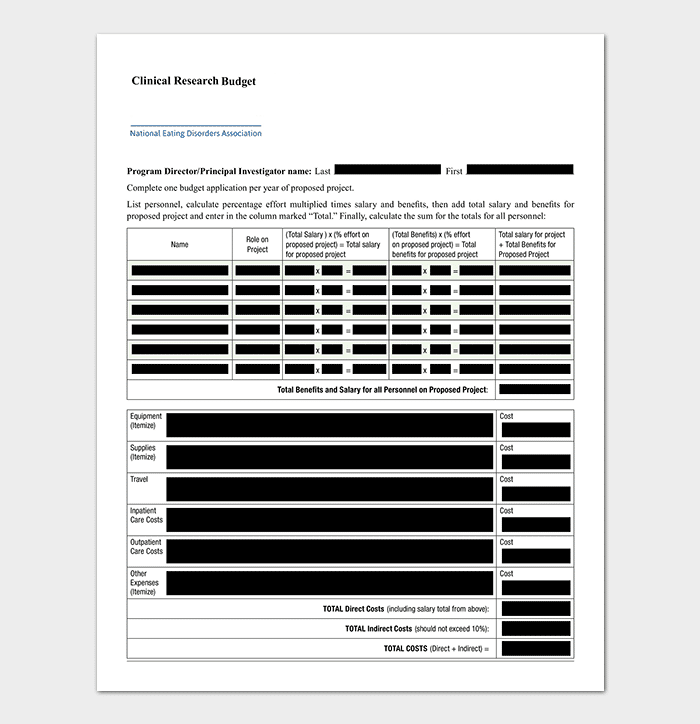
Corporate Research Budget Template
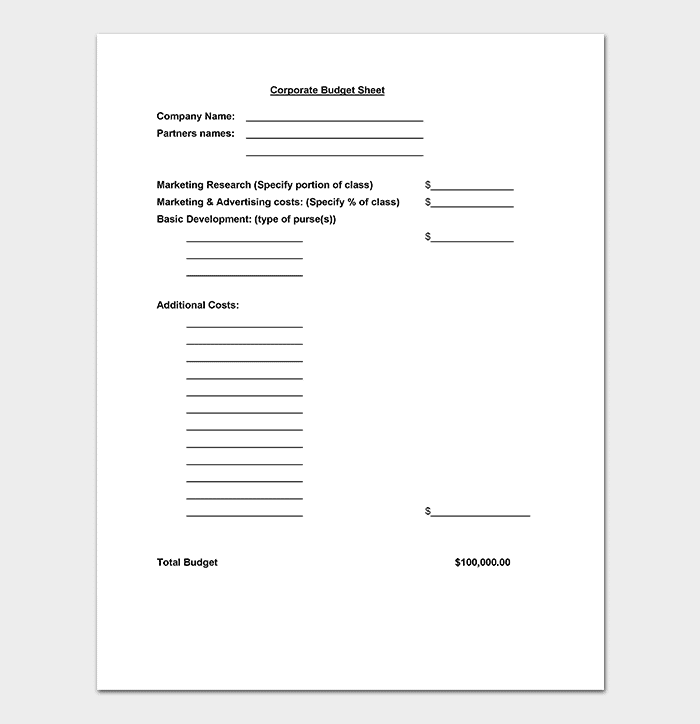
Hospital Research Budget Template
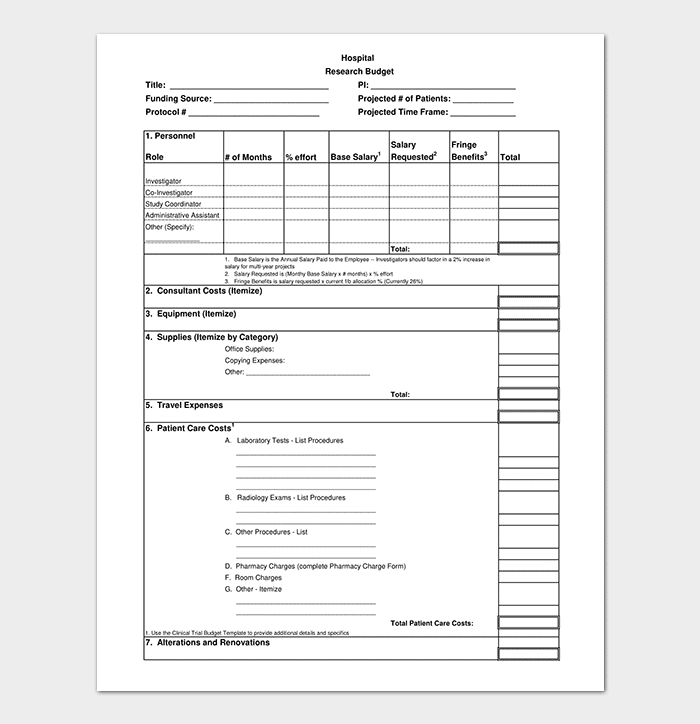
Student Research Budget Form
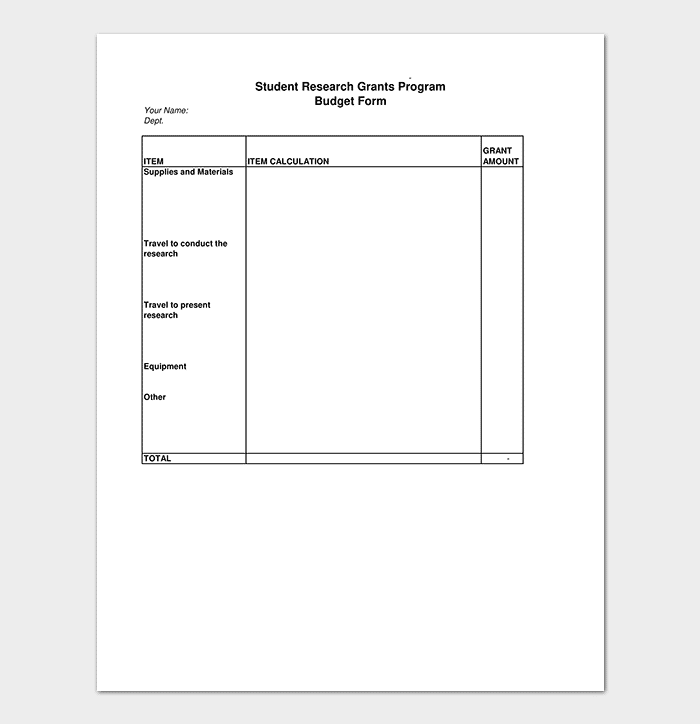
Research Budget for Project

Undergraduate Research Budget Template
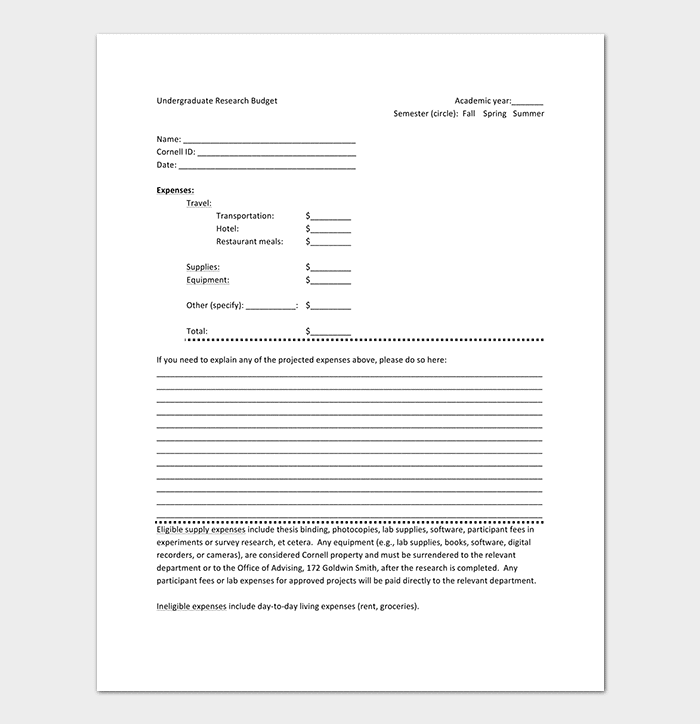
Research Budget Template (PDF)

Research Proposal Budget Template

Research/Project Budget Template

Faculty Research Grant Budget Template

Research Project Budget Example

Research Budget Template Spreadsheet

Detailed Research Budget Template

Whether you are an expert or a novice in writing research budget proposals, one thing that’s for sure is that you will always find yourself making purely avoidable mistakes.
As these documents are highly sensitive, mistakes are things you can’t afford; which is why you are advised to always keep a sample template for reference.
How did our templates helped you today?
Opps what went wrong, related posts.

19 FREE Budget Proposal Templates (Word & PDF)

Bi-weekly Budget Templates

14+ Budget Templates for Excel

5+ Bi-weekly Budget Template

Event Budget Template – 20+ Planners

Marketing Budget Template – 20+ (Excel, PDF)

Weekly Budget Template – 16+ Smart Planners

Annual Budget Template (Yearly Budget Planners for Excel)
Thank you for your feedback.
Sample budgets
| Project item | Cost | Quantity | Subtotal |
|---|---|---|---|
| Colony of Bombus impatiens, Koppert Biological | $257.00 | 4 | $1028.00 |
| Shipping on Bumblebee Colonies (overnight MI to NV) | $75.00 | 4 | $300.00 |
| Pollen for 4 colonies for 3 months | $6/lb. | 12lbs | $72.00 |
| 5g Octopamine hydrochloride, Sigma Aldrich | $98.82 | 1 | $98.82 |
| Total | n/a | n/a | $1498.82 |
Justification
Bumblebee colonies will be obtained from Koppert Biological Systems (MI, USA) and shipped overnight to Nevada. An emerging standard for publication is the utilization of three to five colonies for testing so as to minimize individual colony biases and to acquire a sufficient data set. In order to maintain the colonies I will need pollen to feed them on a daily basis. Additionally I will use the chemical octopamine hydrochloride to explore neuroendocrine relationships between gustatory responsiveness, learning, and octopamine.
| Item | Justification | Supplier/Catalog # | Cost |
|---|---|---|---|
| LIVE/DEAD® Sperm Viability Kit | Quantification of sperm number and viability | ThermoFisher Scientific/L7011 | $407.00 |
| Avant Guard 20ul Barrier tips | For processing sperm samples | MidSci/AV20 | $66.00 |
| Plastic vials (1,000) | Individual rearing of study organism | BioQuip/8909 | $175.00 |
| Drosophila culture vials | Rearing prey fruit flies | Carolina Biological Supply/173080 | $150/00 |
| Formula 4-24®Instant Drosophila Medium, Blue, Case of Four 4-L Bags | Rearing prey fruit flies | Carolina Biological Supply/173214 | $85.95 |
| Microflex Latex Evolution One Gloves, Small (Pack of 1000) | Amazon/EV-2050-S | $128.00 | |
| PureLink miRNA isolation kit | Small RNA extraction | ThermoFisher Scientific /K157001 | $211.00 |
| PureLink® RNA Mini Kit | Large RNA extraction | ThermoFisher Scientific/12183018A | $252.00 |
| Total | n/a | n/a | $1474.95 |
| Equipment, Justification, Product Website URL | Cost |
|---|---|
| $72 | |
| $25.00 | |
| 3D printed pieces *This is the cost for printing the chess pieces. | $300 |
| $110.00 | |
| $83.00 | |
| Arduino Uno (x1)This micro-computer interprets the sensor data and handles the audio files. | $25.00 |
| $59.94 | |
| Misc. Electronic components *This includes the solder, wires, connectors, and other items to build the sensor array. | $100.00 |
| Chessboard *This is the playing surface for the game, as well as the element that the sensor array is attached to. | $30.00 |
| Wood sheets (x4) *These will be used to build the pillar housing the board, electronics, and speakers. | $58.00 |
| Chairs (x2) *Simple chairs for players to sit and play the game. | $30.00 |
| $35.00 | |
| Misc. funding is for unexpected expenses. | $60 |
| Total | $987.94 |
I estimated shipping costs to the best of my knowledge.
* Costs are estimated based on average costs of the material; final cost may be slightly different.
Compliance protocols MUST be approved and linked in SeRA to a SPO project record prior to award acceptance.
Budgets and Budget Justifications
Main navigation.
Proposal budgets and budget justifications are the financial road maps of sponsored projects. When thoughtfully and strategically built they both help propel proposals to award and pave the way for effective post-award management. Below are templates and resource links to help you build successful budgets and budget justifications.
Questions? Concerns? Contact the Client Advocacy & Education team . We're here to help!
- Detailed Budget Template Quick Start Guide
- Detailed Budget Template Reference Guide
- Detailed Budgeting Webinar recording - NSF Example (50 minutes)
- Each recording includes ORA detailed budget template capabilities, best practices for setup and use, and a test case demonstration.
Stanford Sponsored Project Budget Justification Template - Updated with FY25 Fringe Benefit Rates and FY25 and FY26 IDC Rates
- Within the budget and budget justification template an annual cost-of-living increase of 3% is assumed for salaries and a 3% escalation rate is assumed for all other categories except where noted. These increases have been projected into all years of the budget template and are standard budgeting practice for Stanford sponsored projects. Users may amend the pre-programmed escalation rate(s) to coincide with current Stanford University Budget Office planning assumptions and/or to reflect recent historical growth in costs. Please note, the UBO's planning assumptions are used by the University Budget Office for planning purposes only and are subject to change. What may be appropriate at the university level may not be applicable at the school or department levels.
Links & Notes for Common Budget Categories
Personnel costs.
- OBI Financial Reporting Payroll and Labor Management (PLM) Reports
- Stanford Post doc Funding Guidelines
- Graduate Student Assistantship Salary Rates and Tuition Allowances *
Stanford requires a commitment of effort on the part of the PI on all sponsored projects with the following exceptions. This requirement applies even if a sponsor does not require a commitment of effort on the part of the PI and/or does not allow the direct charging of PI salary. PI effort may be expended during the academic year, summer quarter only, or both.
Note: If a sponsor does not allow the direct charging of PI salary and the project does not meet one of the 3 below PI effort exceptions, PI effort must be cost shared.
Stanford tracks and manages effort primarily through direct salary charges to sponsored projects, cost sharing salary charges, or a combination of direct charging and cost sharing.
The requirement of PI effort does not extend to:
- Equipment grants
- Seed grants for students/postdocs where the faculty mentor is named as PI, dissertation support, training grants, or other awards intended as "student augmentation “
- Limited-purpose awards characterized by Stanford as Other Sponsored Activities, including travel grants, conference support, etc.
See RPH 3.1 Preparation and Submission of Proposal Budgets for more information.
*Graduate Student Research Assistantships
Effective 9/1/23, the University contribution of tuition allowance granted to non-SoM funded Research Assistants increased to 55%, and 45% will be charged to the source funding on sponsored awards that pay Stanford's full facilities & administrative (F&A) cost rates.
- For non-SoM funded Research Assistants on sponsored awards that pay an F&A rate less than Stanford's full facilities & administrative (F&A) cost rates the University contribution of tuition allowance remains 40%, and 60% will continue to be charged to the source funding.
- For SoM funded Research Assistants the University contribution of tuition allowance remains 19%, and 81% will continue to be charged to the source funding.
- See the Graduate Financial Support Salary & TAL Tables for more information.
Fringe Benefits
- DoResearch- Stanford Rates
- Faculty members do NOT accrue vacation leave or sick leave. Short absences for personal business, illness, jury duty, military duty, and similarly limited absences normally are with full salary. Under conditions specified in the Faculty Handbook , sabbatical leave may be granted by a school dean.
- Let’s look at an example:
- Dr. Cardinal, an ASR, has an annual salary of $120,000 and was budgeted for 100% effort on a federal award in FY24.
| Dr. Cardinal's Budgeted 100% Salary for FY24 | $120,000 | ||
| Dr. Cardinal's Budgeted Fringe Benefits for FY24 (28.4%) | $34,080 | ||
- During FY24, Dr. Cardinal works 100% on the federal award as proposed and takes vacation for the half the month of April.
- Review the below chart to see how Dr. Cardinal's salary, fringe benefits (28.4% for FY24), and vacation accrual (8.9% for FY24) will post to the federal award and the difference between the total incurred amount and that which was budgeted above.

- When the ASR takes vacation, the award to which their salary is being charged will NOT be charged for the commensurate amount of their salary and benefits. If the ASR takes all the vacation they accrue while working on a project, the vacation accrual charges and credits will net to zero.
- IMPORTANT: In practical application, staff working on sponsored projects often take less vacation time than they accrue resulting in sponsored projects incurring the cost of vacation accruals without receiving all the offsetting credits. When this occurs, incurred personnel costs will exceed budgeted personnel amount. This will require investigators and award managers to either rebudget from other project budget categories, as available and allowed by the given award's terms and conditions, to cover the additional personnel costs or identify another funding source to support the project costs in excess of those awarded from the sponsor. If you are constructing or managing a project budget with a significant amount of personnel that accrue vacation, it is highly recommended that you discuss with your investigator the financial implications of vacation accrual costs and devise a proactive management plan.
- For more information on which employees at Stanford accrue vacation and sick leave, review the Stanford Administrative Guide 2.1.6 .
- Know what qualifies as Capital Equipment and can be counted toward the acquisition cost vs. must be budgeted separately.
- Oracle Financials -> Stanford iProcurement - For equipment quotes
- California affords partial exemption from sales and use taxes for research and development equipment purchases. Qualifying purchases must pay the remaining state tax and local and district taxes.
- Fabricated Equipment , “a unique individual piece of equipment or scientific instrument built by Stanford personnel,” may be budgeted on sponsored projects (in Section C. Equipment) if it meets federal regulations and university policies. Fabricated Equipment is exempt from the MTDC Indirect Cost (F&A) Rate and subject to Stanford’s 2.6 Fabrication Property Management policy.
- Oracle Financials -> Stanford iProcurement - For supply quotes
- OBI Financial Reporting - For historical supply spending data
- Egencia - Stanford Travel's Online Booking Tool
- gsa.gov - Per Diem Rates
- When budgeting lodging costs for conference attendance, we recommended, if you can identify from the conference website or other available information what the conference room rate has historically been or will be and if this rate is higher than the gsa.gov lodging rate for the conference location, to budget the conference room rate as opposed to the gsa.gov lodging rate and explain this in the associated budget justification.
- Conversely, when budgeting lodging costs when it is known the lodging costs will be substantially less than the gsa.gov lodging rate for the given location(s), we recommend budgeting the known lower lodging costs and, again, explain this in the associated budget justification. This is a common occurrence when individuals travel and stay at another institution's or research facility's guesthouse/onsite accommodations.
- Field Work allowability and budgeting instructions will be explicitly outlined in the FOA/PA. Read the FOA/PA carefully and follow the specific guidance provided.
- “Meals may be allowable for subjects and patients under study, or where specifically approved as part of the project activity, provided that such charges are not duplicated in participants' per diem or subsistence allowances” – per NIH Grants Policy Statement. These costs should be budgeted with Patient Costs, when appropriate.
- NOTE: Unless otherwise allowable and included on the sponsor-approved budget, Stanford travelers must use the per diem option for travel meals when the funding source is a sponsored award – per Stanford Fingate Travel Meals Policy.
- Food costs for an activity that are not integral to the success of the Project Goals (SOW) are generally not allowable (i.e. lab meetings, coffee breaks, etc.).
Other Direct Costs
Animal care.
- There are two types of animal costs: purchase of laboratory animals and cost of animal care. These costs must be budgeted separately at Stanford. Animal purchases are considered technical supplies and full F&A costs will apply, while the cost of animal care provided by SVSC (Stanford Veterinary Services Center) should be budgeted as "other expenses." A special F&A rate applies to all SVSC animal care.
Consultants
- Name and title
- Daily salary rate
- Number of days engaged
- Other expenses (e.g., travel)
- NOTE: The NIH allows individuals to be listed in the role of Other Significant Contributor who will “contribute to the scientific development or execution of the project, but are not committing any specified measurable effort (i.e., person months) to the project. These individuals are typically presented at "effort of zero person months" or "as needed." Individuals with measurable effort may not be listed as Other Significant Contributors (OSCs). Consultants should be included if they meet this definition. OSCs are not considered senior/key personnel , but you must include biosketches for OSCs.
Data Management & Sharing Plan
- Most federal funding agencies now require a Data Management & Sharing Plan. This plan requests applicants planning to generate scientific data to document how the scientific data will be managed and shared.
- NIH Data Management & Sharing guidance - RMG
Participant Support Costs
- Participant support costs (PSC) are defined in the Uniform Guidance as direct costs for items such as stipends or subsistence allowances, travel allowances, and registration fees paid to or on behalf of participants or trainees (but not employees) in connection with conferences or training projects. PSC is excluded from the MTDC base.
- Federal Awards: refer to the specific program announcement to which you are applying, and as needed, contact the sponsor, to determine if you are allowed to budget for PSC.
- Non-federal Awards: do NOT propose PSC on non-federal sponsored projects unless required by the sponsor. Categorize such costs using the expenditure types for travel, stipend, etc.
- Additional PSC Budgeting and Charging Considerations
Patient Care
- If Patient Care is to be included in your budget, ensure you seek clarification from your PI on if these are "research" patient care costs or "usual/standard" patient care costs. The costs of routine or ancillary services provided by hospitals to individuals participating in a research program can be categorized as "research patient care" costs and are appropriate to include in your proposal budget. Expenses for routine services or items that would have normally occurred without the existence of this research or study are considered "usual patient care" and are not appropriate to include in your proposal budget.
- RMG has constructed a Budgeting Patient Care worksheet to aid you in this determination and calculation for proposal budgets. Contact your RMG representative for further information.
- If you are budgeting Patient Care costs, where will the activities take place? If services are at CTRU, utilize the budgeting workbook. CTRU services are always off-campus, and the budget template will calculate this. A second rate schedule should be used in the PDRF.
Miscellaneous Examples of “Other Direct Costs”
- Honoraria for non-employees
- Hospital employee salaries
- Maintenance contracts, warranties, training costs, etc. for equipment. (Review Accounting Manual 2.2 for a breakdown of costs that can be subsumed with cost of the equipment and costs that should be categorized separately as “Other Direct Costs.”
- Postage (typical F&A-type costs but appropriate as a direct cost when it specifically benefits the aims of the project)
- Publication costs
Facilities & Administrative Cost Rates
- DoResearch- Stanford Rates
- Dean of Research Pre-Approved indirect cost (IDC) exception list
- Project-specific IDC waiver
36+ SAMPLE Research Budgets in PDF | MS Word
Research budgets | ms word, 36+ sample research budgets, what is a research budget, the components of a complete research budget, how to set a research budget, why is a research budget important in a grant application, what are the types of budgeting schemes, how much is the standard research project grant amount.
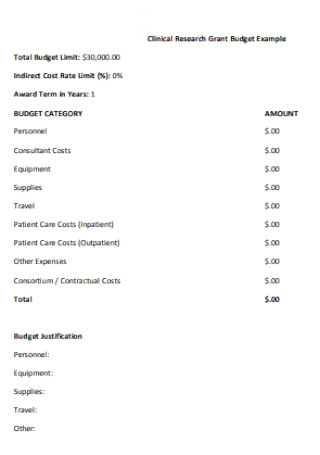
Clinic Research Grant Budget
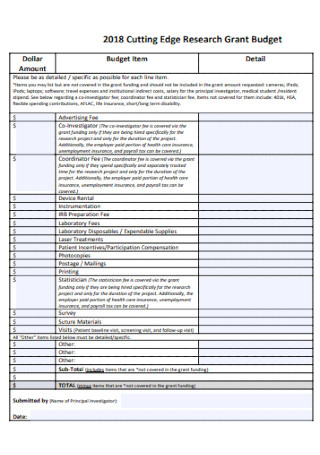
Research Grant Budget Template
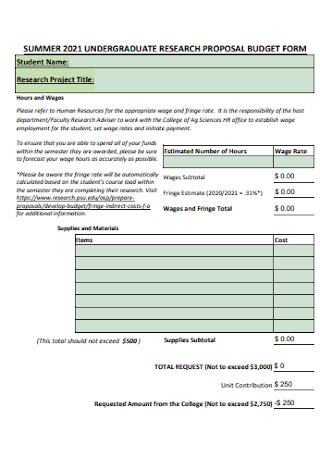
Undergraduate Research Budget Form
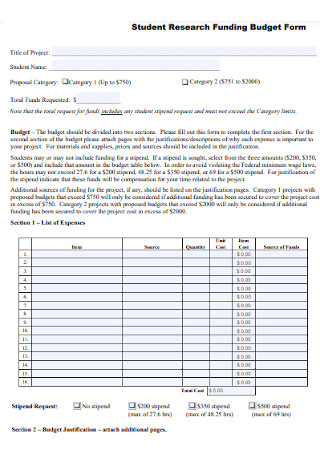
Student Research Funding Budget
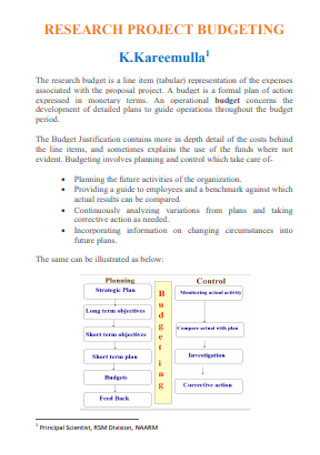
Research Project Budget Template
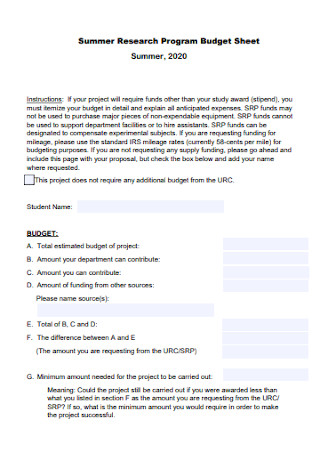
Research Program Budget Sheet

Film Research Budget Template
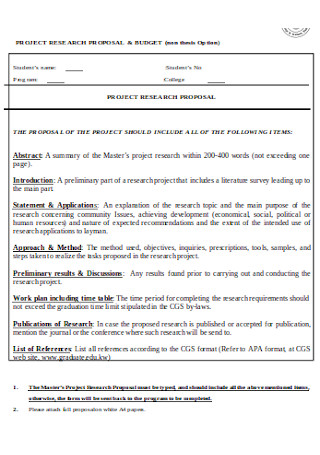
Project Research Proposal Budget
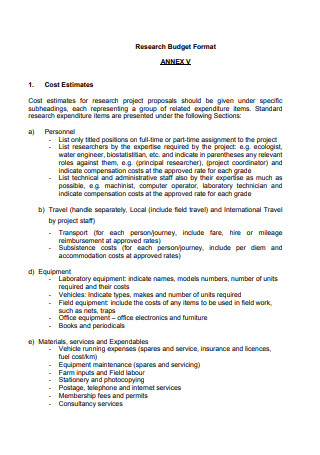
Research Budget Format
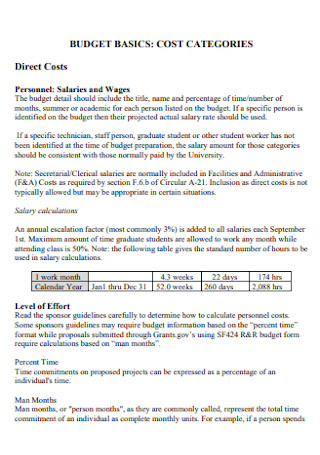
Basic Research Budget Template

Health Service Research Budget
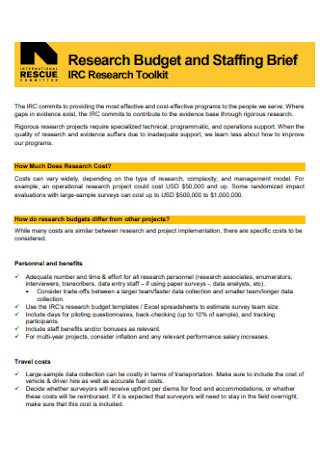
Staffing Research Budget
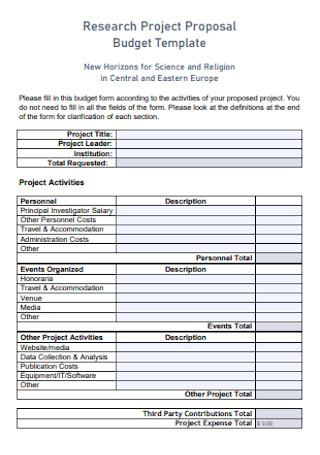
Simple Research Budget Template
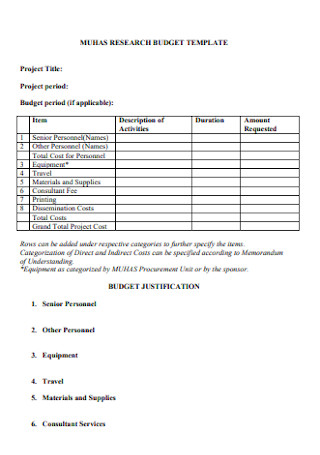
Formal Research Budget Template
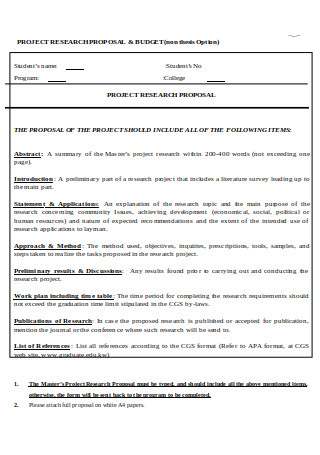
Research Proposal and Budget
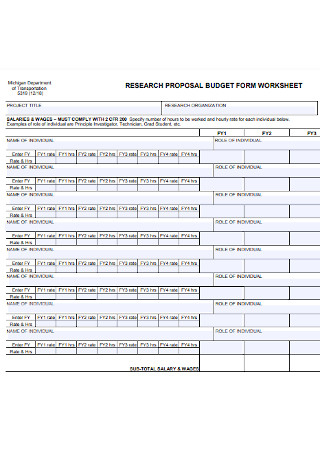
Research Budget Form Worksheet
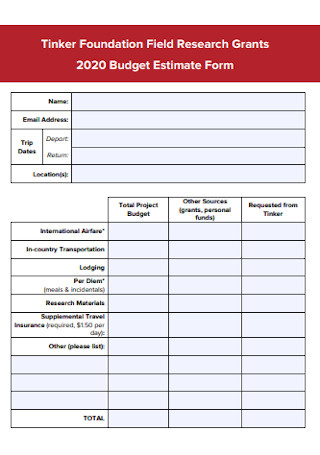
Foundation Field Research Budget
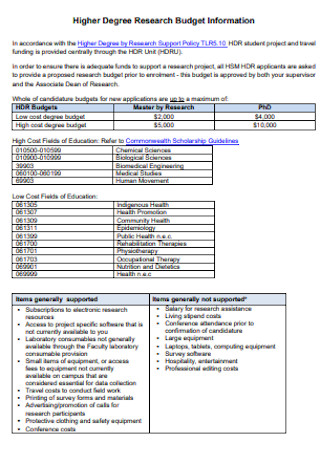
Higher Degree Research Budget
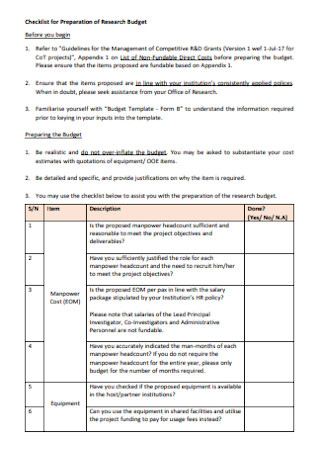
Checklist for Preparation of Research Budget
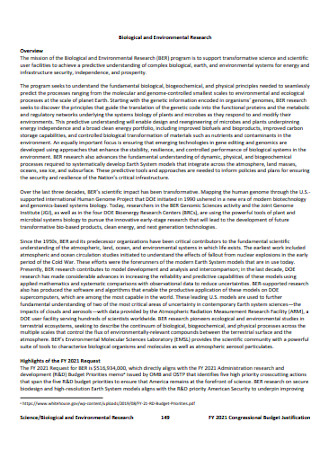
Biological and Environmental Research
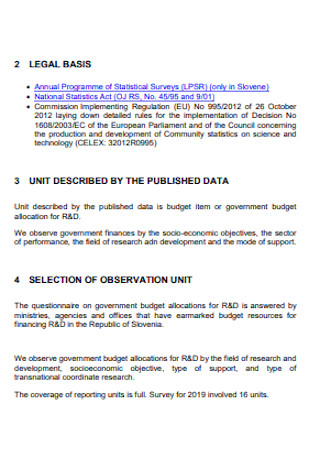
Governament Research Budget Template
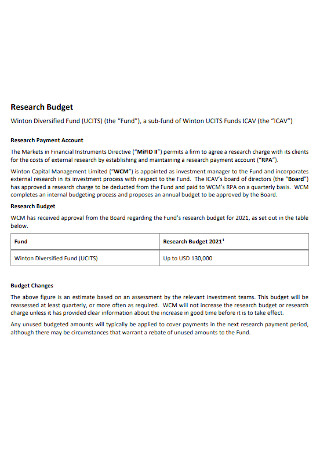
Research Payment Budget Template
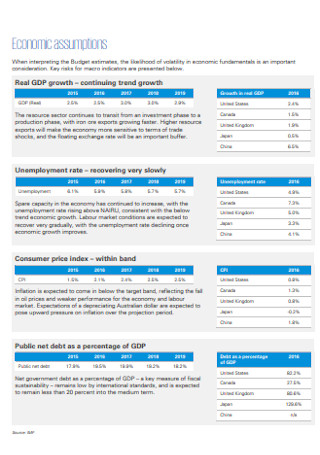
Standard Research Budget Template

Research Development Budget Template
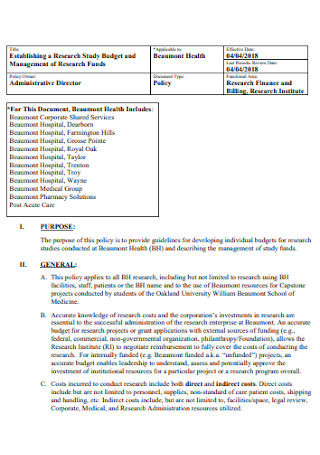
Research Study Budget
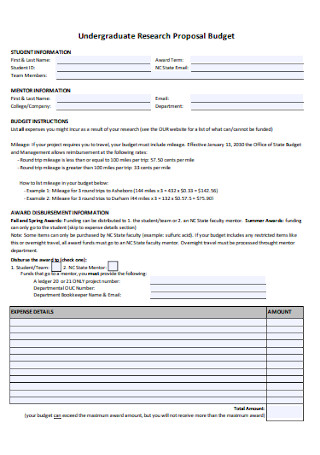
Undergraduate Research Proposal Budget
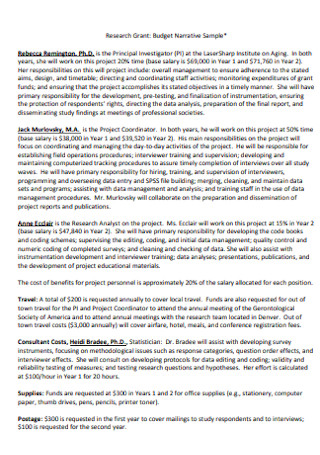
Sample Research Grant Budget
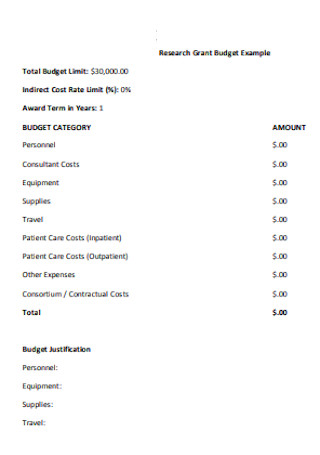
Research Grant Budget Example
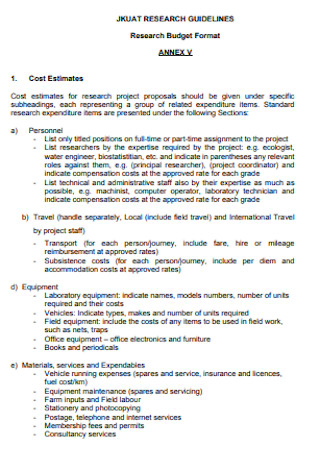
Survey Research Budget Template

Annual Research Budget Template
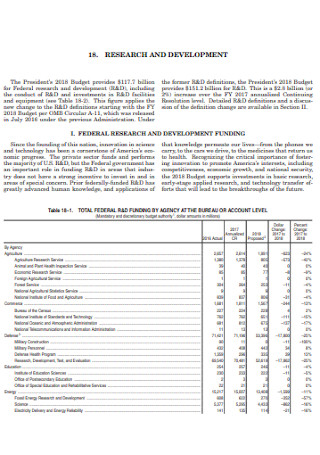
Research Development Budget Example
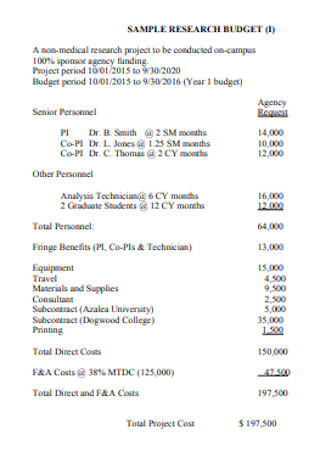
Sample Project Research Budget
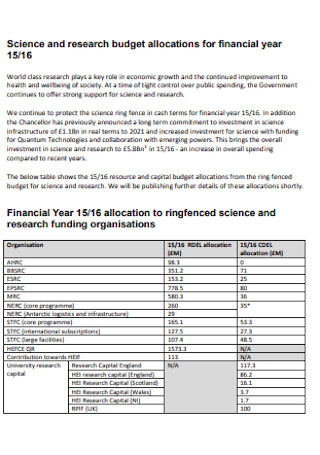
Science and Research Budget Template
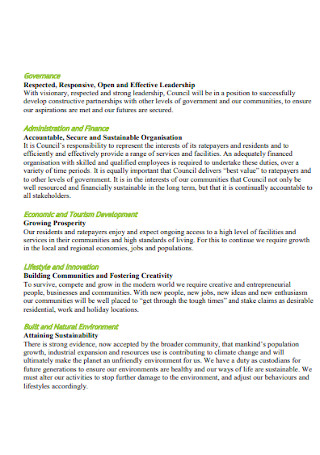
Annual Business Plan Budget
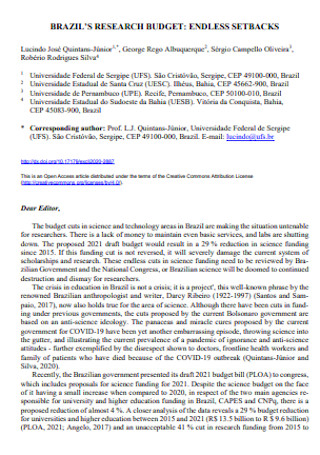
Formal Research Budget Example
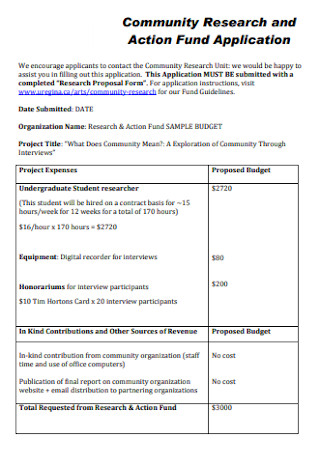
Community Research Budget Template
Why is a research budget important, step 1: brainstorm all research activities, step 2: consider the rules and regulations, step 3: insert the associated costs for each item, step 4: download a sample research budget, step 5: organize your data and format, step 6: justify your research budget.
- Incremental budgeting – this form of budgeting tackles a previous year’s actual figures while you add or subtract a percentage to answer the acquired budget of the current year. Also, this is the simplest and most common form of budgeting scheme.
- Activity-based budgeting – the next example focuses on getting the number of inputs necessary to provide the outputs and targets implemented by an organization. A common example is when a business should start recognizing the necessary tasks to take first that will meet the sales target until the costs for each activity to do will be determined.
- Value proposition budgeting – another budgeting scheme answers the reason for inputting the amount you estimated in a budget, how a value outweighs the expenses, or even why the budget should be justified. And as much as possible, do not include irrelevant expenditures in this section.
- Zero-based budgeting – lastly, this budgeting plan assumes that every department in a budget is zero and should be rebuilt from the very beginning. But, the expenses should be justified. And this strategy is helpful when you need costs quickly, particularly if a business undergoes an economic downturn.
Share This Post on Your Network
You may also like these articles, 20+ sample hotel budget in pdf.
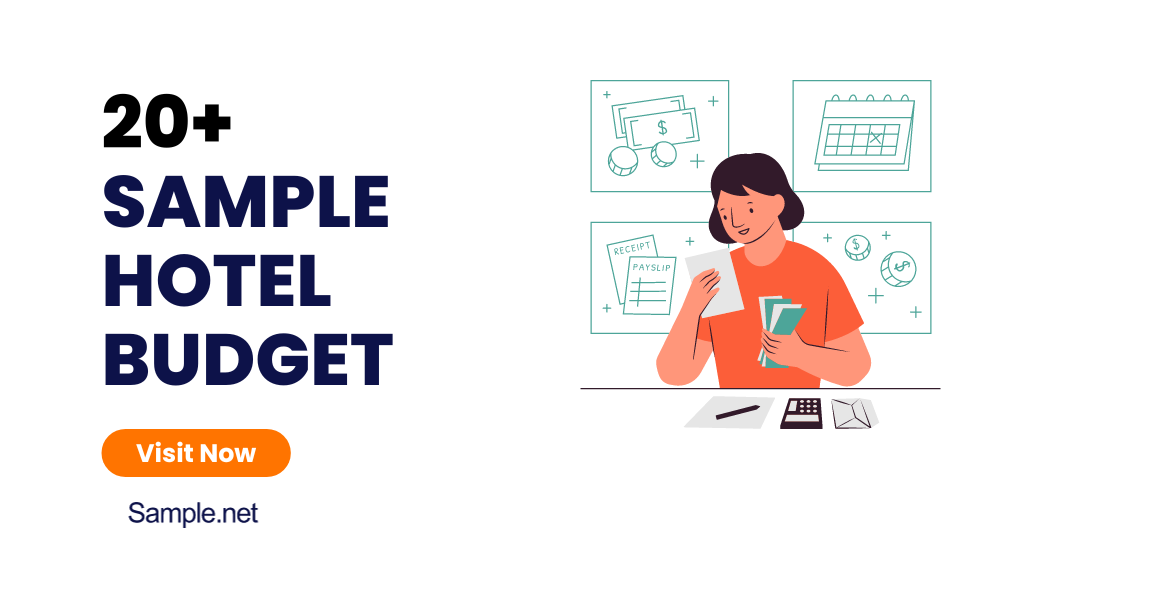
”A hotel should relieve travelers of their insecurity and loneliness. It should make them feel warm and cozy,” Bill Kimpton quotes. A hotel may have heavy expectations to satisfy…
50+ SAMPLE Library Budgets [ School, College, Public ]
![50+ SAMPLE Library Budgets [ School, College, Public ] sample library budgets](https://images.sample.net/wp-content/uploads/2022/01/SAMPLE-Library-Budgets.png)
A single book can introduce you to a million imaginations. You can only imagine how much knowledge, skills, and information a whole library has for book lovers. But just like…
browse by categories
- Questionnaire
- Description
- Reconciliation
- Certificate
- Spreadsheet
Information
- privacy policy
- Terms & Conditions
Have a language expert improve your writing
Run a free plagiarism check in 10 minutes, generate accurate citations for free.
- Knowledge Base
- Starting the research process
- How to Write a Research Proposal | Examples & Templates
How to Write a Research Proposal | Examples & Templates
Published on October 12, 2022 by Shona McCombes and Tegan George. Revised on September 5, 2024.

A research proposal describes what you will investigate, why it’s important, and how you will conduct your research.
The format of a research proposal varies between fields, but most proposals will contain at least these elements:
Introduction
Literature review.
- Research design
Reference list
While the sections may vary, the overall objective is always the same. A research proposal serves as a blueprint and guide for your research plan, helping you get organized and feel confident in the path forward you choose to take.
Table of contents
Research proposal purpose, research proposal examples, research design and methods, contribution to knowledge, research schedule, other interesting articles, frequently asked questions about research proposals.
Academics often have to write research proposals to get funding for their projects. As a student, you might have to write a research proposal as part of a grad school application , or prior to starting your thesis or dissertation .
In addition to helping you figure out what your research can look like, a proposal can also serve to demonstrate why your project is worth pursuing to a funder, educational institution, or supervisor.
| Show your reader why your project is interesting, original, and important. | |
| Demonstrate your comfort and familiarity with your field. Show that you understand the current state of research on your topic. | |
| Make a case for your . Demonstrate that you have carefully thought about the data, tools, and procedures necessary to conduct your research. | |
| Confirm that your project is feasible within the timeline of your program or funding deadline. |
Research proposal length
The length of a research proposal can vary quite a bit. A bachelor’s or master’s thesis proposal can be just a few pages, while proposals for PhD dissertations or research funding are usually much longer and more detailed. Your supervisor can help you determine the best length for your work.
One trick to get started is to think of your proposal’s structure as a shorter version of your thesis or dissertation , only without the results , conclusion and discussion sections.
Download our research proposal template
Prevent plagiarism. Run a free check.
Writing a research proposal can be quite challenging, but a good starting point could be to look at some examples. We’ve included a few for you below.
- Example research proposal #1: “A Conceptual Framework for Scheduling Constraint Management”
- Example research proposal #2: “Medical Students as Mediators of Change in Tobacco Use”
Like your dissertation or thesis, the proposal will usually have a title page that includes:
- The proposed title of your project
- Your supervisor’s name
- Your institution and department
The first part of your proposal is the initial pitch for your project. Make sure it succinctly explains what you want to do and why.
Your introduction should:
- Introduce your topic
- Give necessary background and context
- Outline your problem statement and research questions
To guide your introduction , include information about:
- Who could have an interest in the topic (e.g., scientists, policymakers)
- How much is already known about the topic
- What is missing from this current knowledge
- What new insights your research will contribute
- Why you believe this research is worth doing
Here's why students love Scribbr's proofreading services
Discover proofreading & editing
As you get started, it’s important to demonstrate that you’re familiar with the most important research on your topic. A strong literature review shows your reader that your project has a solid foundation in existing knowledge or theory. It also shows that you’re not simply repeating what other people have already done or said, but rather using existing research as a jumping-off point for your own.
In this section, share exactly how your project will contribute to ongoing conversations in the field by:
- Comparing and contrasting the main theories, methods, and debates
- Examining the strengths and weaknesses of different approaches
- Explaining how will you build on, challenge, or synthesize prior scholarship
Following the literature review, restate your main objectives . This brings the focus back to your own project. Next, your research design or methodology section will describe your overall approach, and the practical steps you will take to answer your research questions.
| ? or ? , , or research design? | |
| , )? ? | |
| , , , )? | |
| ? |
To finish your proposal on a strong note, explore the potential implications of your research for your field. Emphasize again what you aim to contribute and why it matters.
For example, your results might have implications for:
- Improving best practices
- Informing policymaking decisions
- Strengthening a theory or model
- Challenging popular or scientific beliefs
- Creating a basis for future research
Last but not least, your research proposal must include correct citations for every source you have used, compiled in a reference list . To create citations quickly and easily, you can use our free APA citation generator .
Some institutions or funders require a detailed timeline of the project, asking you to forecast what you will do at each stage and how long it may take. While not always required, be sure to check the requirements of your project.
Here’s an example schedule to help you get started. You can also download a template at the button below.
Download our research schedule template
| Research phase | Objectives | Deadline |
|---|---|---|
| 1. Background research and literature review | 20th January | |
| 2. Research design planning | and data analysis methods | 13th February |
| 3. Data collection and preparation | with selected participants and code interviews | 24th March |
| 4. Data analysis | of interview transcripts | 22nd April |
| 5. Writing | 17th June | |
| 6. Revision | final work | 28th July |
If you are applying for research funding, chances are you will have to include a detailed budget. This shows your estimates of how much each part of your project will cost.
Make sure to check what type of costs the funding body will agree to cover. For each item, include:
- Cost : exactly how much money do you need?
- Justification : why is this cost necessary to complete the research?
- Source : how did you calculate the amount?
To determine your budget, think about:
- Travel costs : do you need to go somewhere to collect your data? How will you get there, and how much time will you need? What will you do there (e.g., interviews, archival research)?
- Materials : do you need access to any tools or technologies?
- Help : do you need to hire any research assistants for the project? What will they do, and how much will you pay them?
If you want to know more about the research process , methodology , research bias , or statistics , make sure to check out some of our other articles with explanations and examples.
Methodology
- Sampling methods
- Simple random sampling
- Stratified sampling
- Cluster sampling
- Likert scales
- Reproducibility
Statistics
- Null hypothesis
- Statistical power
- Probability distribution
- Effect size
- Poisson distribution
Research bias
- Optimism bias
- Cognitive bias
- Implicit bias
- Hawthorne effect
- Anchoring bias
- Explicit bias
Once you’ve decided on your research objectives , you need to explain them in your paper, at the end of your problem statement .
Keep your research objectives clear and concise, and use appropriate verbs to accurately convey the work that you will carry out for each one.
I will compare …
A research aim is a broad statement indicating the general purpose of your research project. It should appear in your introduction at the end of your problem statement , before your research objectives.
Research objectives are more specific than your research aim. They indicate the specific ways you’ll address the overarching aim.
A PhD, which is short for philosophiae doctor (doctor of philosophy in Latin), is the highest university degree that can be obtained. In a PhD, students spend 3–5 years writing a dissertation , which aims to make a significant, original contribution to current knowledge.
A PhD is intended to prepare students for a career as a researcher, whether that be in academia, the public sector, or the private sector.
A master’s is a 1- or 2-year graduate degree that can prepare you for a variety of careers.
All master’s involve graduate-level coursework. Some are research-intensive and intend to prepare students for further study in a PhD; these usually require their students to write a master’s thesis . Others focus on professional training for a specific career.
Critical thinking refers to the ability to evaluate information and to be aware of biases or assumptions, including your own.
Like information literacy , it involves evaluating arguments, identifying and solving problems in an objective and systematic way, and clearly communicating your ideas.
The best way to remember the difference between a research plan and a research proposal is that they have fundamentally different audiences. A research plan helps you, the researcher, organize your thoughts. On the other hand, a dissertation proposal or research proposal aims to convince others (e.g., a supervisor, a funding body, or a dissertation committee) that your research topic is relevant and worthy of being conducted.
Cite this Scribbr article
If you want to cite this source, you can copy and paste the citation or click the “Cite this Scribbr article” button to automatically add the citation to our free Citation Generator.
McCombes, S. & George, T. (2024, September 05). How to Write a Research Proposal | Examples & Templates. Scribbr. Retrieved September 13, 2024, from https://www.scribbr.com/research-process/research-proposal/
Is this article helpful?
Shona McCombes
Other students also liked, how to write a problem statement | guide & examples, writing strong research questions | criteria & examples, how to write a literature review | guide, examples, & templates, what is your plagiarism score.

Info for Morgan State University
- Future Students
- Current Students
- Faculty & Staff
- Parents & Families
- Alumni & Friends
- For the Media
Search Morgan State University
Commonly searched pages.
- Payment Plan
- Housing Application
- Comptroller
- Office of Research Administration
- University Application Information
- Role of Principal Investigator
- Proposal Components
- Proposal Submission Checklist
- Budget Development
- Fringe Benefit Rate
- F&A Cost Rates
- Proposal and Budget Examples
- Pre-Award Subawards
- Limited Submission
- Policies and Guidelines
- Research Compliance
- Funding Sources
- Grant Success Stories Contest
Successful Proposal and Budget Examples
National science foundation submissions.
NSF EIR Proposal - Hulse, Tom (submitted 2018)
NSF Sample Awarded Proposal (Sociology-submitted 2014)
NSF Sample Awarded Proposal (Geosicence)
NSF Sample Awarded Proposal (Math-submitted 2009)
National Institute of Health Submissions
NIH Sample Proposal (Chemistry)
NIH Samples: Applications, Attachments, and Other Documents
Contact Information
Office of Research Administration Morgan State University Tyler Hall, Student Service Bldg Suite 304 Baltimore, MD 21251
Questions, contact: P: 443-885-4044 F: 443-885-8280 E: [email protected]
Sample Budget Justifications
Sponsor requirements differ, and sample budget justifications should be seen only as a starting point. Guidelines for sponsor requirements are in the annotated budget justifications. Read the solicitation and the sponsor’s proposal preparation guidelines for each proposal's requirements.
For Research Sponsors
- Sample Budget Justification for Non-Federal Research [DOCX] - June 2024
- Annotated Budget Justification - Non-Federal Research [webpage]
- Sample Budget Justification for Federal Research [DOCX] - June 2024
- Annotated Budget Justification - Federal Research [webpage]
For Non-Research Sponsors:
- Sample Budget Justification for Non-Federal Non-Research [DOCX] - June 2024
- Annotated Budget Justification - Non-Federal Non-Research [webpage]
- Sample Budget Justification for Federal Non-Research [DOCX] - June 2024
- Annotated Budget Justification - Federal Non-Research [webpage]
- Uniform Guidance Fixed Rate Requirements
- F&A Methodology
- F&A Components
- MIT Use of a de minimis Rate
- Fund Account Overhead Rates
- Allocation Rates
- Determination of On-Campus and Off-Campus Rates
- Employee Benefits (EB) Rates
- Vacation Accrual Rates
- Graduate Research Assistant Tuition Subsidy
- Historical RA Salary Levels
- MIT Facts and Profile Information
- Classification of Sponsored Projects
- Types of Sponsored Awards
- How Are Sponsored Projects Generated?
- Cost Principles and Unallowable Costs
- Direct and Indirect Costs
- Pre-Proposals / Letters of Intent
- MIT Investigator Status
- Components of a Proposal
- Special Reviews
- Applying Through Workspace
- Proposal Preparation Checklist
- Proposals and Confidential Information
- Personnel Costs
- Subcontracts and Consultants
- Annotated Budget Justification - Federal Research
- Annotated Budget Justification - Non-Federal Research
- Annotated Budget Justification - Federal Non-Research
- Annotated Budget Justification - Non-Federal Non-Research
- Kuali Coeus Approval Mapping
- Roles and Responsibilities
- Submission of Revised Budgets
- Standard Contract Terms and Conditions
- Contractual Obligations and Problematic Terms and Conditions
- Review and Negotiation of Federal Contract and Grant Terms and Conditions
- Industrial Collaboration
- International Activities
- MIT Export Control - Export Policies
- Nondisclosure and Confidentiality Agreements
- Negative Confirmation On Award Notices
- Routing and Acceptance of the Award Notice
- COI and Special Review Hold Notice Definitions
- Limiting Long-Term WBS Account Structures
- SAP Project WBS Element Conditions
- Child Accounts
- Budgets at Award Setup
- Kuali Coeus Electronic Document Storage (EDS)
- Billing Agreements
- PI Absence from Project
- Cost Transfers
- Uniform Guidance and the FAR
- MIT Standard Terms and Policies
- Guidelines for Charging Faculty Summer Salary
- Key Personnel
- Limitations on Funds - Federal Contracts
- Project Budgets
- No-Cost Extensions
- Reporting Requirements
- Return of Unexpended Funds to Foundations
- When a PI Leaves MIT
- Research Performance Progress Reports
- Closing Out Fixed Price Awards
- Record Retention
- Early Termination
- Reporting FAQs
- Using SciENcv
- AFOSR No-Cost Extension Process
- Terms and Conditions
- Department of Defense Disclosure Guidance
- Department of Energy / Office of Science Disclosure Guidance
- Introduction to Industrial Sponsors
- General Considerations for Industrial Proposals
- SRC Guidance to Faculty Considering Applying for SRC Funding
- Find Specific RFP Information
- Industrial Proposal Checklist
- Proposal Formats
- Special Requirements
- Deadline Cycles
- Model Proposals
- Non-Competitive Industrial Proposals
- Master and Alliance Agreements With Non-Standard Proposal Processes
- Template Agreements
- New Consortium Agreements
- Competitive Industrial Proposals
- Collaborative (No-cost) Research Agreements
- National Aeronautics and Space Administration Disclosure Guidance
- NASA Graduate Research Fellowship Programs
- NASA PI Status and Definitions
- NIH Checklists and Preparation Guides
- National Institutes of Health Disclosure Guidance
- Human Subjects and NIH Proposals
- NIH Data Management and Sharing
- NIH Research Performance Progress Reports
- Grant Opportunities for Academic Liaison with Industry (GOALI) proposals
- MIT Guidance Regarding the NSF CAREER Program
- Research Experiences for Undergraduates (REU) Supplements
- National Science Foundation Disclosure Guidance
- NSF Participant Support Costs
- NSF Proposals: Administrative Review Stage
- NSF Collaborations
- NSF Pre-Award and Post-Award Actions
- NSF Reporting
- NSF Frequently Asked Questions
- NSF Requirements for Harassment Free Environment
- NSF Safe and Inclusive Working Environment
- Process, Roles and Responsibilities
- What Is Allowable/Eligible Cost Sharing?
- MIT’s Preferred Cost Sharing Funds
- Third-Party Cost Sharing
- Showing Cost Sharing in a Proposal Budget
- Sponsor Specific Instructions Regarding Location in the Proposal
- Funding F&A Costs as Cost Sharing
- Using Faculty Effort for Cost Sharing
- Information about Completing the Cost Sharing Template
- NSF Cost Sharing Policy
- Tracking/Reporting Cost Sharing
- Special Cost Sharing Topics
- International Activities Examples
- Rubicon Fellowships
- Marie Skłodowska-Curie Fellowships
- Criteria for Subrecipients
- Subawards at Proposal
- Requesting New Subawards
- Managing Subawards
- RAS Subaward Team Contacts
- Funding and Approval
- Proposal Phase
- Award Set-up
- Monitoring Research During Project Period
- Closeout Phase
- Voluntary Cost Sharing
- Sponsor-Specific Guidance
- Audits and Auditors
- Upcoming Trainings and Events
- Research Administration Practices (RAP)
- NCURA Virtual Workshops and Webinars
- Guide to RA Resources and Training
- Career Paths
- Newsletters
- Tools and Systems
- Award Closeout & Audits
- Award Setup
- Cost Sharing
- Financial Conflict of Interest
- Kuali Coeus
- Project Monitoring
- Proposal Preparation & Submission
- Research Sub Awards
- Research Administration Email Lists
- RAS Operations
- VPR Research Administration Organization Chart
- By department
- By administrator
- Research Administrator Day
- News & Announcements
- Onsite searching on the VPR public websites

In this section
- Graduate Program-Specific Contacts
- Doctoral Dissertation Policies and Procedures
- Master’s Thesis Policies and Procedures
- Thesis and Dissertation Release and Embargo Options
Thesis and Dissertation Formatting Guidelines & Deep Blue Archiving
- Graduate Studies Forms
- Three Minute Thesis Competition
- Graduate Student Appreciation Week
The purpose of these Formatting Guidelines is to make all dissertations and theses legible, accessible, preservable, and uniform in presentation. The steps you take now to format your dissertation and thesis will improve the file for future readers.
See The Mardigian Library’s Formatting Your Thesis or Dissertation with Microsoft Word for video tutorials designed to help you get most of the formatting of your thesis correct the first time. It is recommended that you use the dissertation/thesis template available in this guide which has most of the guidelines already incorporated.
For questions about formatting beyond what is covered in these resources, please check with your dissertation or thesis advisor.
File Format
- Submit the dissertation or thesis as a PDF file
Structure/Accessibility
Techniques for creating accessible documents, including adding alternative text for images, can be found on this website.
Set Document Title: Set the document title (note: this is a document property, not the filename) as your dissertation or thesis title.
Set Document Language
Set the Language of Parts (Quotations, Sections) That Are Different from the Main Language (required if applicable)
Use Correct Headings: Use appropriate heading levels for section and subsection titles. Use “Heading 1” for main section titles (e.g. a Chapter), “Heading 2” for subsection titles (e.g. a Chapter section), and so on.
Create Lists, Columns, and Other Structures by Using the Appropriate Structural Element. Do not use space bar, tab, or enter to arrange text in apparent tables, lists, or columns.
Images, Figures, Tables, Media
- Include descriptive alt text for all images and figures to convey the meaning and context of a visual item in a digital setting (do not use images of tables.)
- Use at least 2-inch top margin on the Title Page.
- Use 2-inch top margin on the first page of every chapter and major section (Acknowledgements, List of Figures, Bibliography, etc.…)
- Use at least 1-inch margins (top, bottom, left, right) on all pages.
Text, Fonts, Color, Spacing
- Use a legible font, size 12 point, black color for all body text. Recommended fonts include Times or Times New Roman (serif fonts) or Arial (sans-serif font). Images and text within images may be in color.
- Headings may be visually different than body text (bigger, bold) and no bigger than size 16 point.
- Font size for footnotes, endnotes, captions, tables, figures, and equations may be smaller than the body text and no less than 9 point.
- Text in the Front Matter that links to a location within the dissertation or thesis (from the Table of Contents, for example) should not be underlined or outlined as hyperlinks.
- Use embedded fonts to ensure all font information in your document is secured in your PDF.
- Use either 1.5-line or double-line spacing throughout for all body text.
- Use single-line spacing for text in tables, lists, footnotes/endnotes, figure/table legends/captions, and bibliographic entries (with a blank line between each citation or entry).
Numbering and Page Numbering
- Number chapters consecutively and name them as follows: Chapter [#] [Title of Chapter]. For example, Chapter 1 Introduction.
- Include the chapter number and name as a heading on the first page of chapter and in the Table of Contents.
- Number all tables, figures, appendices, etc. consecutively and name them as follows: Table [#] [Caption/Title/Legend].
- Tables, Figures, etc. may be numbered simply using whole numbers throughout the document (Figure 1, Figure 2, Figure 3) or by combining the chapter number and table, figure, etc. number per chapter (Figure 2.1, Figure 2.2, Figure 3.1). Choose one system from an appropriate style guide and use it consistently.
- Include a List of Figures, List of Tables, etc. in the front matter if the dissertation or thesis includes more than one figure, table, illustration, appendix, etc. (required if applicable)
- List of Figures (or List of Tables, List of Illustrations, List of Appendices, etc.) includes the title of each, its caption/title/legend, and page number on which it begins.
- Include page numbers in the front matter, centered in the footer, using lowercase Roman numerals, beginning on page ii (the first page after the Identifier/Copyright page).
- Include page numbers in the dissertation text and following sections, centered in the footer, using Arabic numerals, beginning on page 1.
Components of the Dissertation and Thesis
Include the following components, in the following order. All required components must be included.
Use the page numbering conventions given below. Every section below starts on a new page with 2-inch top margin.
Title Page (required)
No page number. No page count.
- See the section below for details of component requirements.
Frontispiece (Illustration or Epigraph) (optional)
Identifier/Copyright Page (required)
- No page number. Start page count here.
- See section below for details of component requirements.
Dedication (optional)
- Page numbers required. Start lowercase Roman numerals (starting with ii) here.
- Acknowledgments (optional)
Page numbers required. Lowercase Roman numerals.
Preface (optional)
Table of Contents (required)
List of Tables, List of Figures, etc. (required if applicable)
- List of Tables required if there is more than one table, etc.
List of Illustrations/Photos (required if applicable)
List of Appendices (required if applicable)
List of Abbreviations, List of Acronyms, List of Symbols (optional)
Abstract (required)
Dissertation or Thesis Text (required)
- Page numbers required. Start Arabic numerals here.
- Appendices (optional)
Bibliography or Reference section(s). (required)
Page numbers required. Arabic numerals. Insert at the end of each chapter, or the end of the dissertation/thesis, in the format preferred by the discipline.
Title Page Components
Include the following components on the title page, in the following order. Begin each item on a new line.
- At least 2 inch top margin on Title Page.
- Complete dissertation or master’s thesis title, centered, and capitalized in title case.
- Your author name should match your legal name or preferred name in Wolverine Access
- You may use initial(s) for middle name(s).
- The following text, including line breaks, centered and single line-spaced.
A dissertation (thesis) submitted in partial fulfillment of the requirements for the degree of Name of Degree (Name of Program) in The University of Michigan-Dearborn YEAR
- The text, “Doctoral Committee or Master’s Thesis Committee:” left justified.
- List chair or co-chairs first (in alphabetical order by surname if more than one) with “Chair” or “Co-Chair” after their titles and names.
- List other committee members in alphabetical order, by last name.
- Professor rank (e.g., Professor, Associate Professor, Assistant Professor, Emeritus Professor) or title (e.g., Dr.)
- Complete full name
- Affiliation, if not affiliated with University of Michigan (e.g., name of university, college, corporation, or organization)
Identifier/Copyright Page Components
Include the following components on the identifier/copyright page, in the following order. Begin each item on a new line, centered.
- Your full legal name (Required)
- Your @umich.edu email address (Required)
- Your ORCID iD (required only for PhD candidates)
ORCID iD is a unique digital identifier that you control and that distinguishes you from other researchers.
- ORCID iD profile URL (Recommended)
- Copyright notice. (Recommended)
Copyright notice notifies readers that you hold the copyright to this work and when it was established.
Use the following format: © Full Name YEAR
Final Formatting Checks
Before submission, double-check the following:
- All numbered series (pages, chapters, tables, figures, etc.) are consistently formatted and consecutive throughout the document.
- All entries in the table of contents and lists match contents as titled/ordered in the dissertation text.
- References/Bibliography entries are complete and match the formatting preference of your discipline.
Thesis or Dissertation Embargo
The thesis or dissertation is submitted as public evidence of your scholarly research and accomplishment. A thesis or dissertation and abstract is normally made publicly available upon degree conferral when it is deposited electronically in Deep Blue. If a student wishes to postpone public release of the final product, also called an embargo, the student should discuss this option with his or her faculty advisor. It has always been the university's expectation that every dissertation and abstract will be released upon conferral of the degree. Only in specific circumstances may release of a thesis or dissertation be deferred, and then only for a limited period of time. The student is responsible for requesting an embargo.
Embargo forms can be found at: "Thesis and Dissertation Release and Embargo Options”
Deep Blue Archiving
Required for doctoral dissertations and highly recommended for Master’s Thesis. The final pdf document of your dissertation or thesis must be submitted electronically to the Mardigian Library. This digital PDF will be the copy of record and will be archived in Deep Blue . Deep Blue is a digital repository that is part of the University of Michigan Library.
To submit your document, you need to provide:
- Your ORCID iD
- Keywords that describe the subject, concepts, theories, and methods used in your document, to help others find and retrieve your document
- A copy of your thesis or dissertation in PDF format
- Optional – up to two supplementary files (no larger than 50 MB each), such as an audio file, spreadsheet, or a software program
To maintain the usability and appearance of your document, please review the Best Practices for Producing High Quality PDF Files , available on Deep Blue.
If you have supplemental materials (such as data) that should also be made publicly available and associated with your dissertation or thesis, consider reaching out to [email protected] for help determining whether these should be deposited into one of the Deep Blue repositories.
Once your document is submitted to Deep Blue by the library, you will receive an email containing the DOI and a URL to access the document. It will also be added to the Mardigian Library catalog and made available on Google Scholar. If no embargo is requested, it may take three to four weeks for your document to become available.
Submit Final Thesis/Dissertation to Deep Blue
More support.
- Library Guide to Formatting Your Thesis or Dissertation with Microsoft Word and Video Tutorials.
- UM IT accessibility guide for creating accessible documents .
- Guide for embedding all fonts in PDFs generated with LaTeX or PDFLaTeX .
Contact your subject librarian for assistance on a wide range of topics including literature searching, citation management, and much more.
Download the Formatting Checklist
Office of graduate studies.

COMMENTS
Steps to Take to Create Your Budget. 1. Consult Your Adviser, Committee Members, and Funding Sources for Guidelines. The source or sources responsible for funding your dissertation research will likely have guidelines on what is and isn't a billable expense. Before defining your projected costs, check your funding organization's ...
A good budget shows the assessors that you have thought about your research in detail and, if it is done well, it can serve as a great, convincing overview of the project. Here are five steps to create a simple budget for your research project. 1. List your activities. Make a list of everything that you plan to do in the project, and who is ...
Example 1: Biomedical Research. In a biomedical research project, the budget must account for specialized equipment, lab supplies, and personnel costs. A well-structured budget ensures that all necessary resources are available to achieve the research goals. For instance, a project studying a new cancer treatment might allocate significant ...
same page about what a budget actually is. A budget is a financial proposal that reflects the work proposed. It outlines the expected project costs in detail, and should mirror the project description. A budget is presented as a categorical list of anticipated project costs that represent the
Example: 5% of total direct costs for contingency. If your total direct costs are $100,000: Contingency: $100,000 x 5% = $5,000. Putting It All Together. Once you've calculated all these parts, add them up to get your total budget. Here's a simplified example: Personnel Costs: $55,500. Equipment and Supplies: $37,400.
Research project budget. Research project budgetPlease use the budget breakdown to jus. ify your project costs. Provide line by line information, adding rows where required, for each cost that is s. ecific to your project. We strongly advise that you refer to the budget guidance in the 'Guidelines for applicants' manual before complet.
The budget justification is one of the most important non-technical sections of the proposal, and it is often required by the sponsor. In this section, the Principal Investigator (PI) provides additional detail for expenses within each budget category and articulates the need for the items/expenses listed. The information provided in the budget justification may be the definitive criteria used ...
A budget is a financial proposal that reflects the work proposed. It outlines the expected project costs in detail and should mirror the project description. A budget is presented as a categorical list of anticipated project costs representing the researcher's best estimate of the funds needed to support the proposed work.
Keep in mind these tips: Convert all foreign currency figures to U.S. dollars. Round all figures to whole dollars. Make sure your budget and your proposal are consistent. Identify areas where you are making efforts to save money! Browse through these sample budgets for a better idea of how to outline your expenses and contact us if you have ...
onery, printing costs, secretarial help etc.) When drawing up a research budget, you must specify each item of expenditure required to conduct the study, even. the cost is covered "in kind" as above. You should also specify any additio. l funding required e.g. external hard drive. This helps to provide a realistic appr.
Dissertation proposals can be up to 25-30 pages in length. Note Sometimes, a research schedule or detailed budget may be necessary if you are pursuing funding for your work. Dissertation prospectus examples. Writing a proposal or prospectus can be a challenge, but we've compiled some examples for you to get your started.
The sample budget template was conceived and created by a team of department administrative managers and OSP staff with the goal of helping researchers and support staff develop sponsored project proposal budgets. For more information about developing budgets see the Overview of Costs for Project Budget page. 13. Process. Budget, Costs, and Rates.
For example, you are developing a budget for a funding opportunity with an indirect cost rate of 25%. Your direct costs are $201,000 broken down by expense categories shown in the second column of the table below. The third and fourth colums present the two ways you can include the 25% overhead in your budget using the Price Model or the Cost ...
Make sure you can ask the critical what, who, and how questions of your research before you put pen to paper. Your research proposal should include (at least) 5 essential components: Title - provides the first taste of your research, in broad terms. Introduction - explains what you'll be researching in more detail.
Dissertation Planner: step-by-step. This planner is designed to help you through all the stages of your dissertation, from starting to think about your question through to final submission. At each stage there are useful prompts to help you plan your work and manage your time.
Medical Research Budget Template. researchamerica.org. Download. A research proposal budget sample is in many ways similar to the research budget sample, only that at this stage, it is still a proposal. This sample is often written in a linear or tabular format and it details all the expenses that are associated with the proposal project.
Misc. funding is for unexpected expenses. $60. Total. $987.94. I estimated shipping costs to the best of my knowledge. * Costs are estimated based on average costs of the material; final cost may be slightly different. View examples of budgets for undergraduate research proposals at the University of Nevada, Reno.
Detailed Budget Webinar Recording - NIH Modular Budget Example (50 minutes) Each recording includes ORA detailed budget template capabilities, best practices for setup and use, and a test case demonstration. ... Seed grants for students/postdocs where the faculty mentor is named as PI, dissertation support, training grants, or other awards ...
36+ SAMPLE Research Budgets in PDF | MS Word. In research, budgeting is one of its consequential processes. This goes from applying for a project fund, finalizing the money breakdown, and most importantly, figuring out how such funds can help answer your research's intriguing questions. So whether you are planning to conduct a thesis, project ...
Example research proposal #2: "Medical Students as Mediators of Change in Tobacco Use" Title page. Like your dissertation or thesis, the proposal will usually have a title page that includes: The proposed title of your project; ... Budget. If you are applying for research funding, chances are you will have to include a detailed budget. ...
National Institute of Health Submissions. NIH Sample Proposal (Chemistry) NIH Sample Proposal (Chemistry) NIH Samples: Applications, Attachments, and Other Documents. A Carnegie "High Research" University. 1700 East Cold Spring Lane. Baltimore, Maryland 21251. 443-885-3333.
Sample Budget Justifications. Sponsor requirements differ, and sample budget justifications should be seen only as a starting point. Guidelines for sponsor requirements are in the annotated budget justifications. Read the solicitation and the sponsor's proposal preparation guidelines for each proposal's requirements.
The purpose of Formatting Guidelines is to make all dissertations and theses legible, accessible, preservable, and uniform in presentation. The steps you take now to format your dissertation and thesis will improve the file for future readers. ... It is recommended that you use the dissertation/thesis template available in this guide which has ...